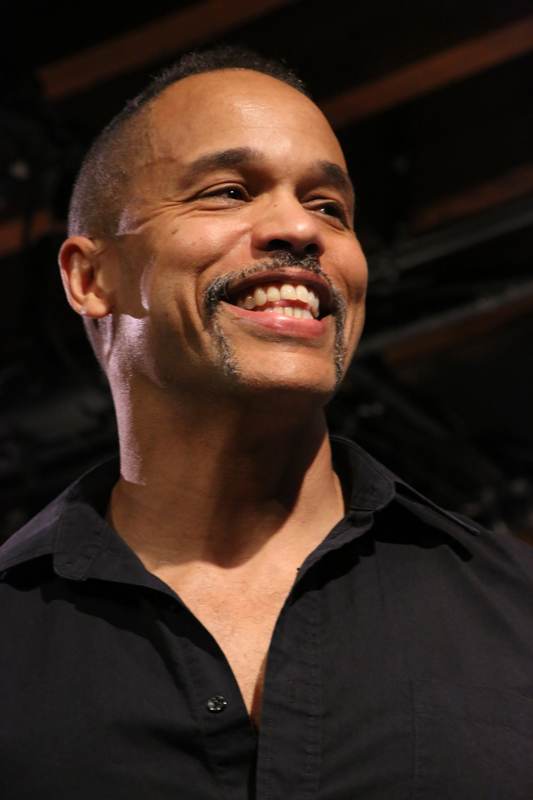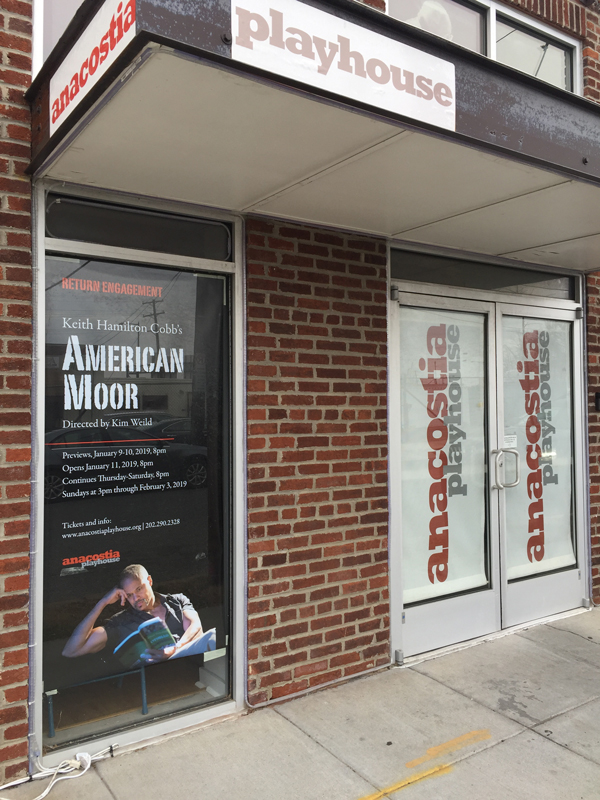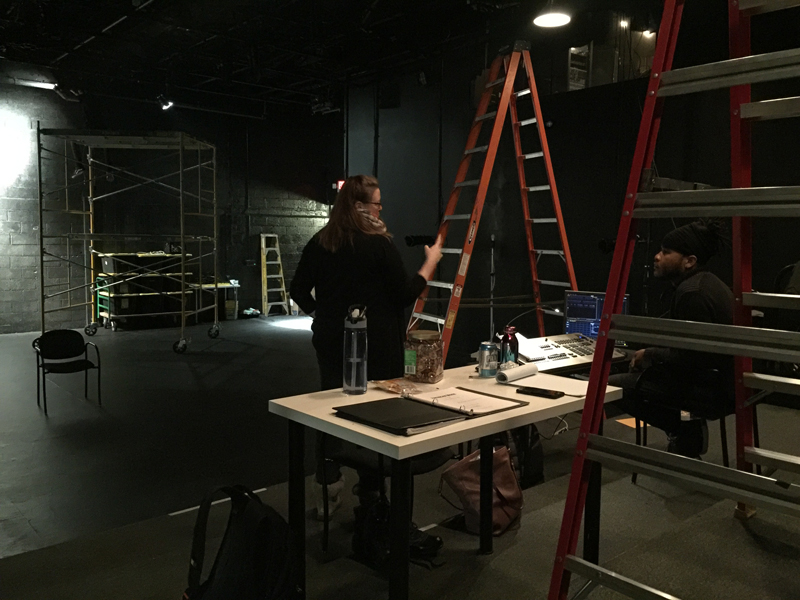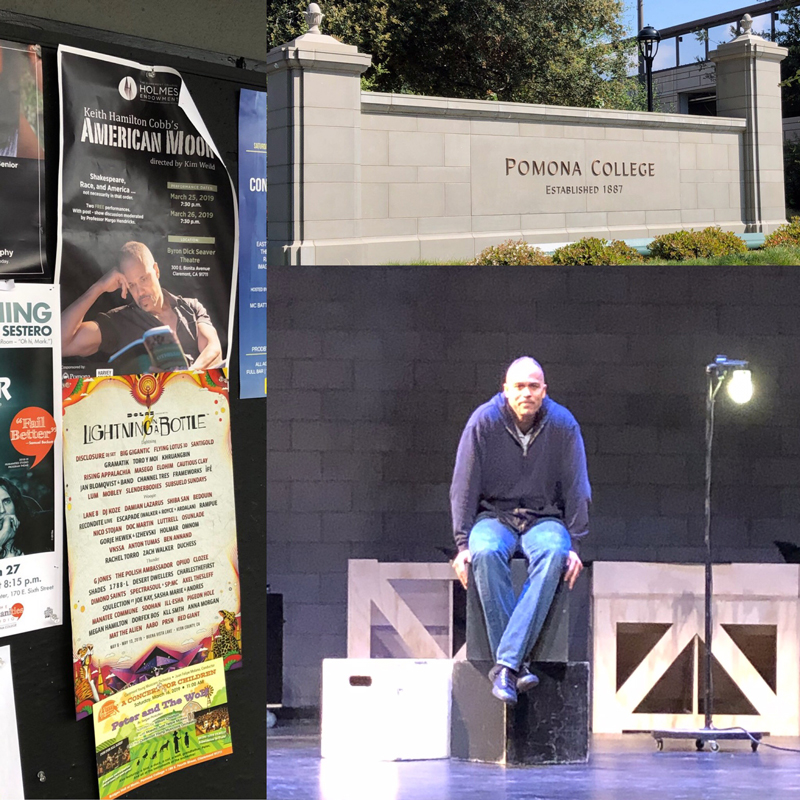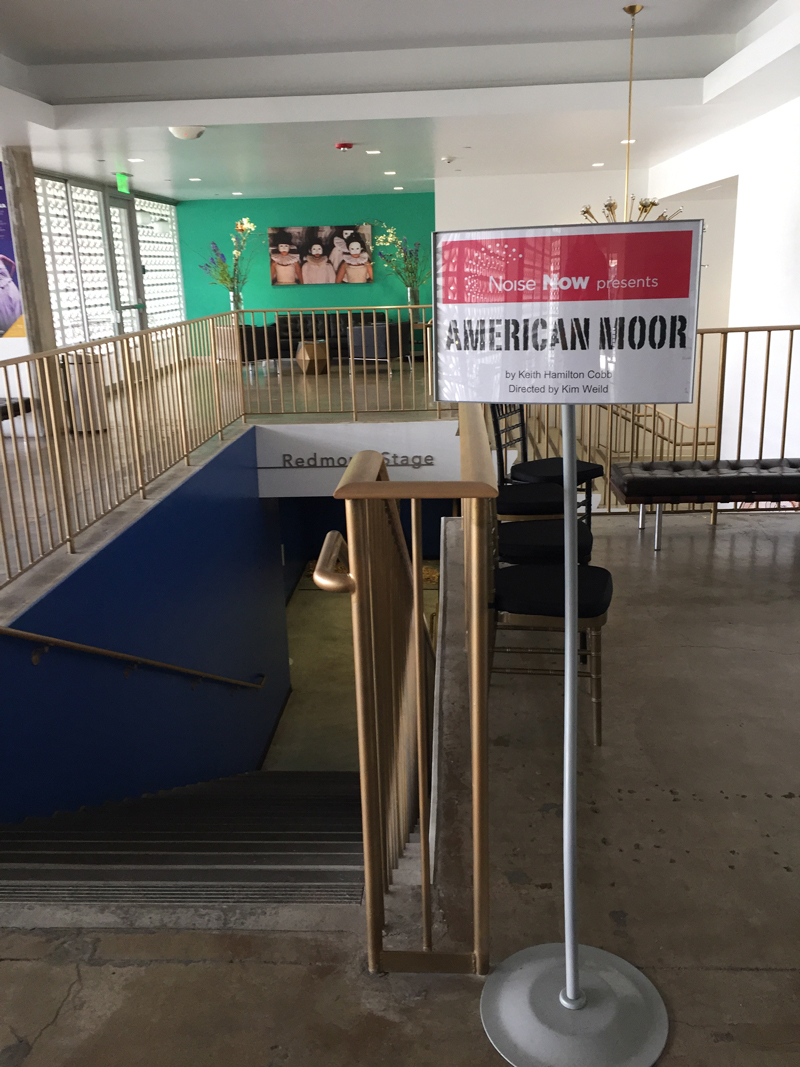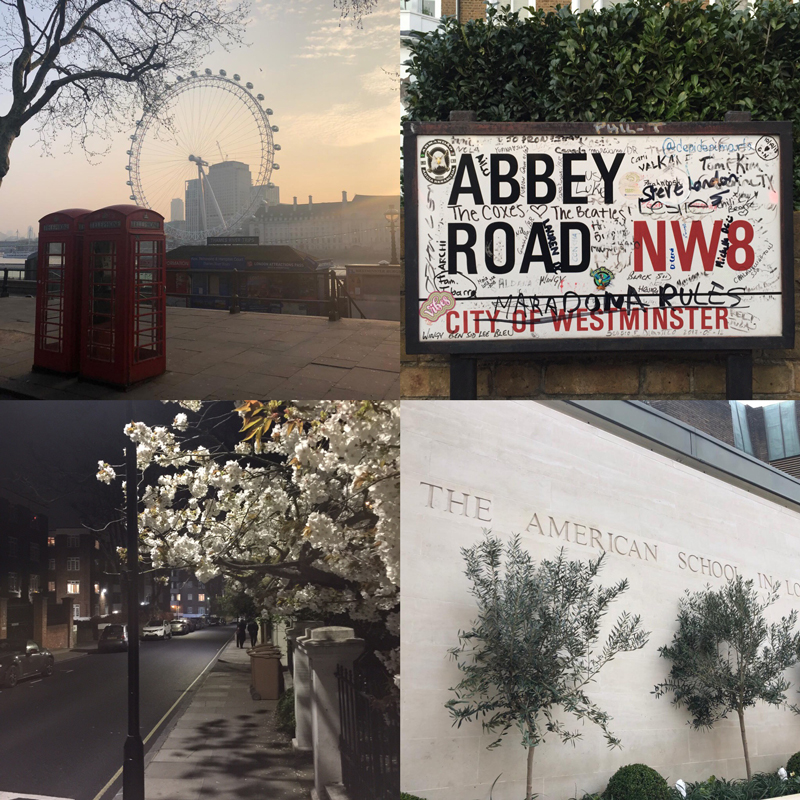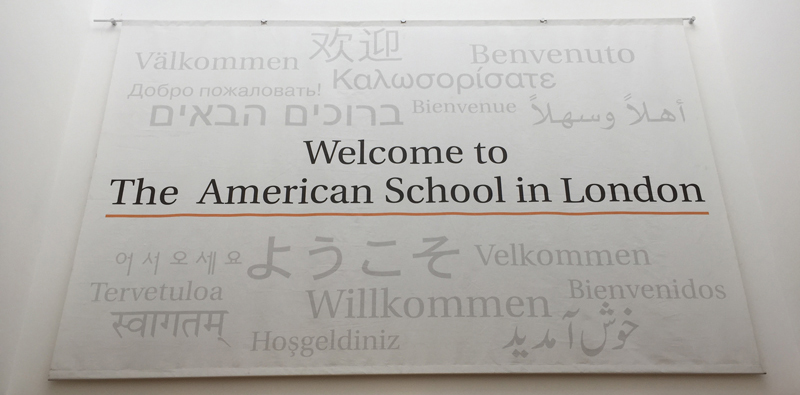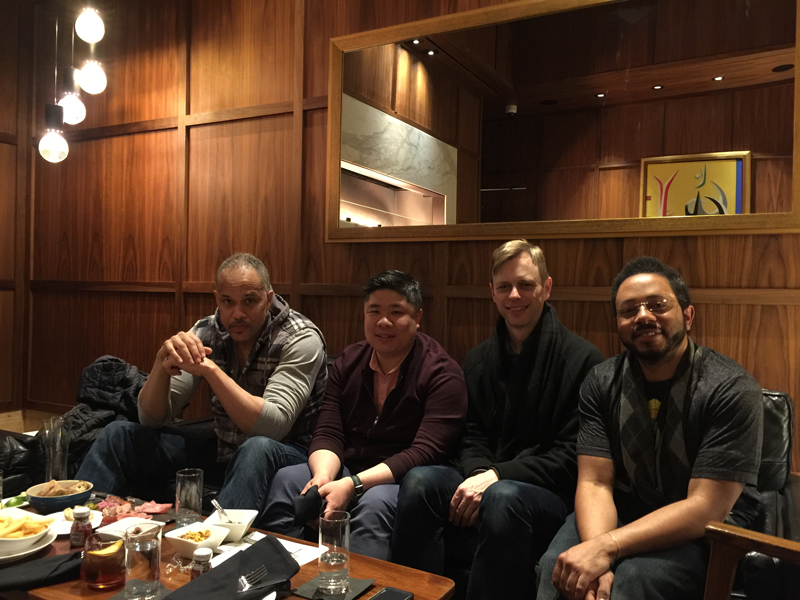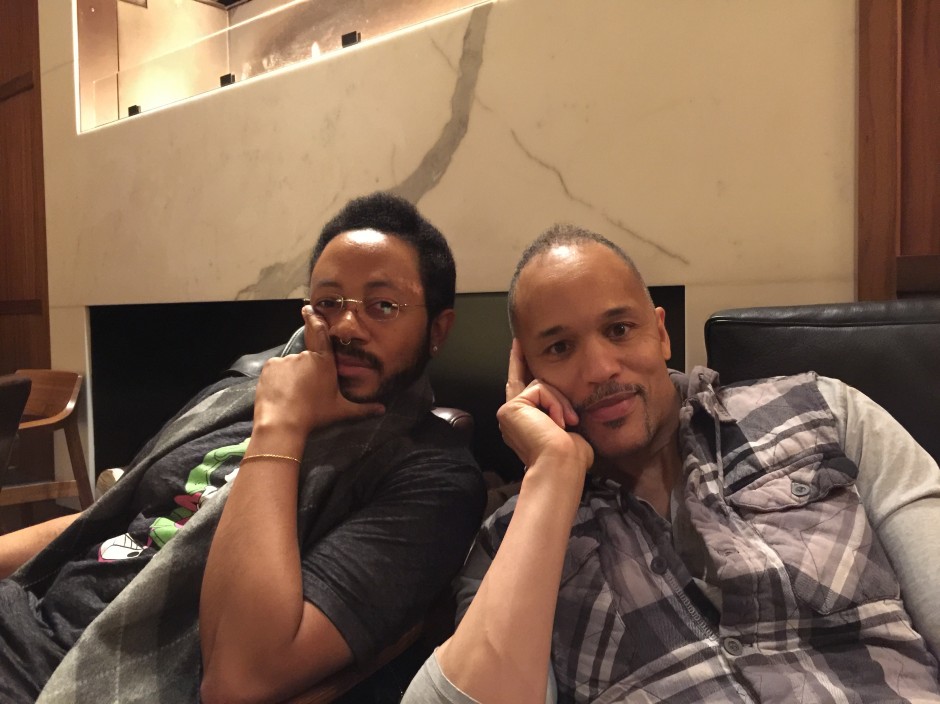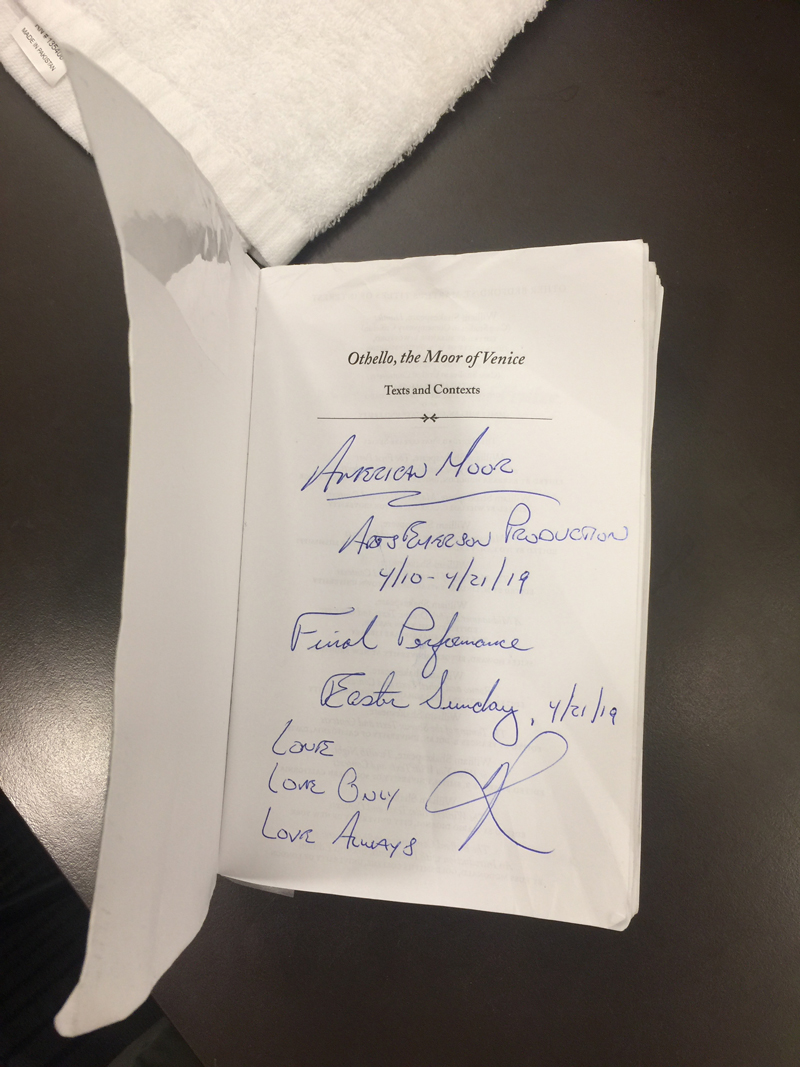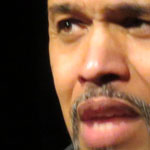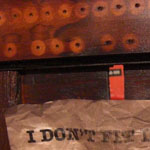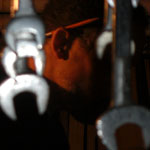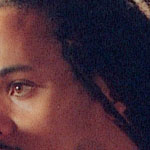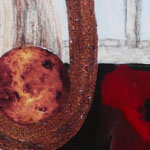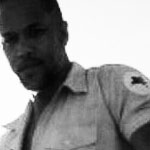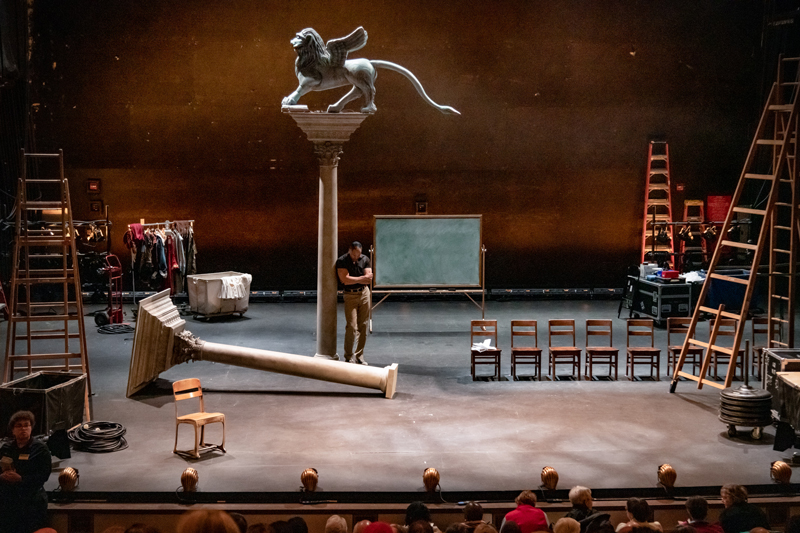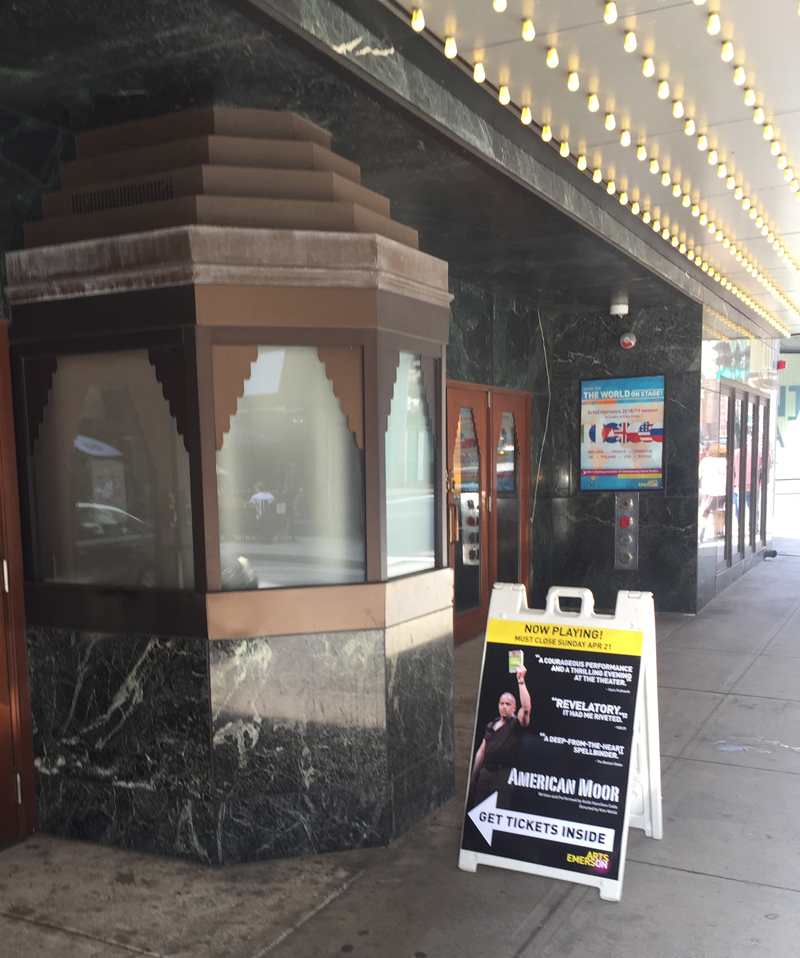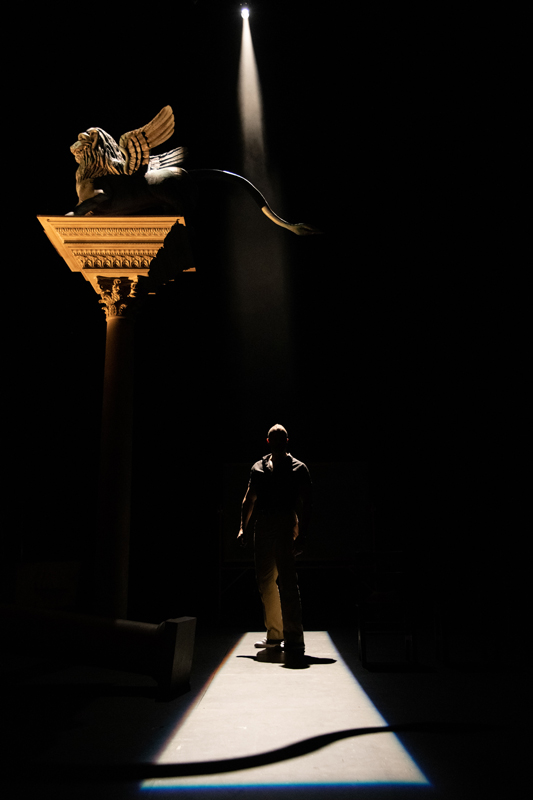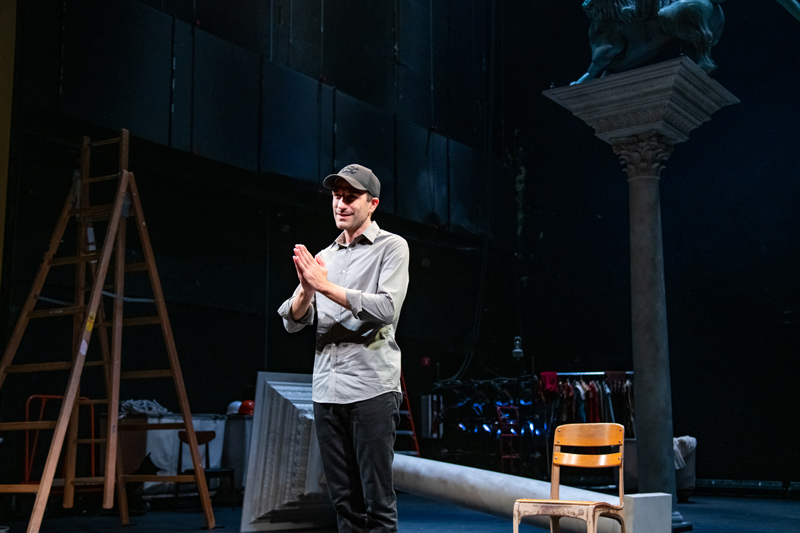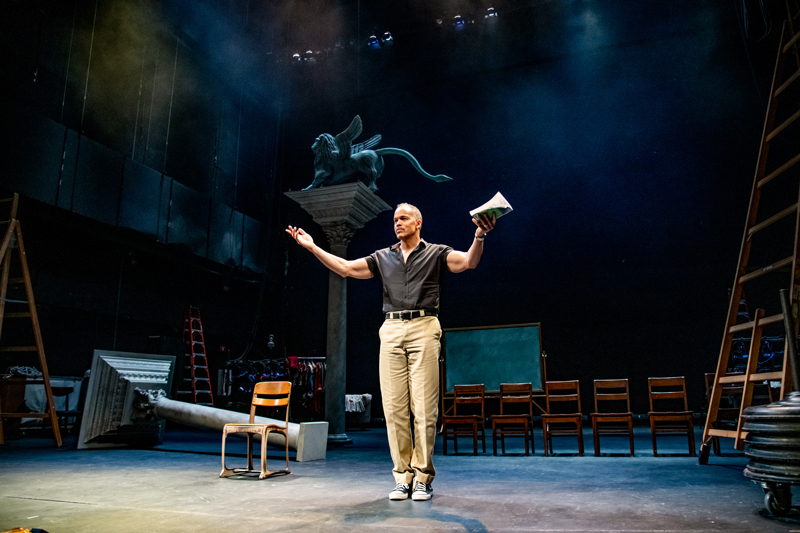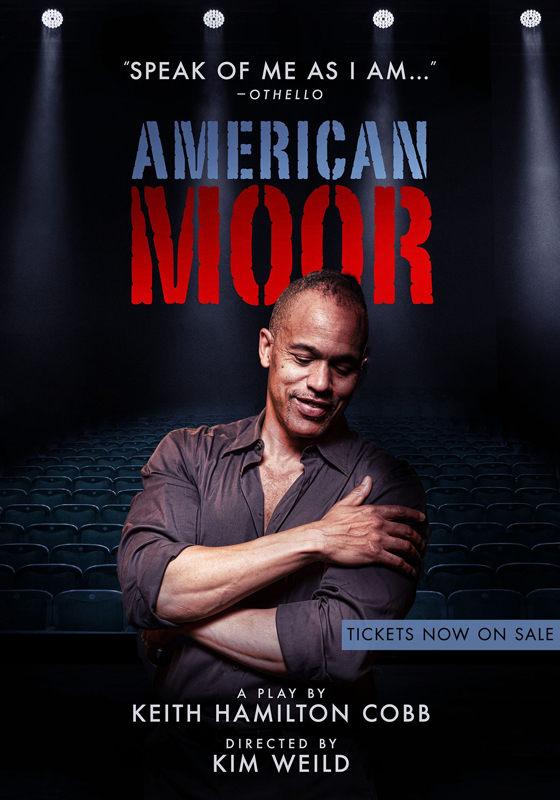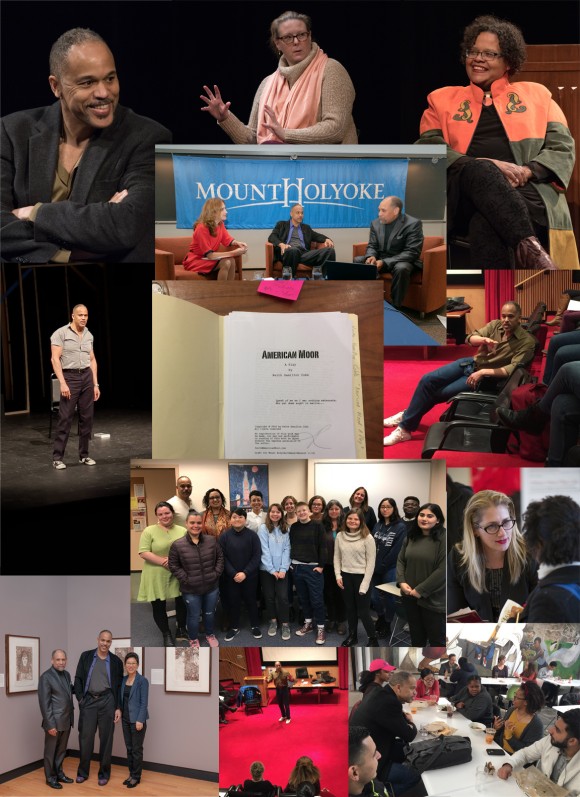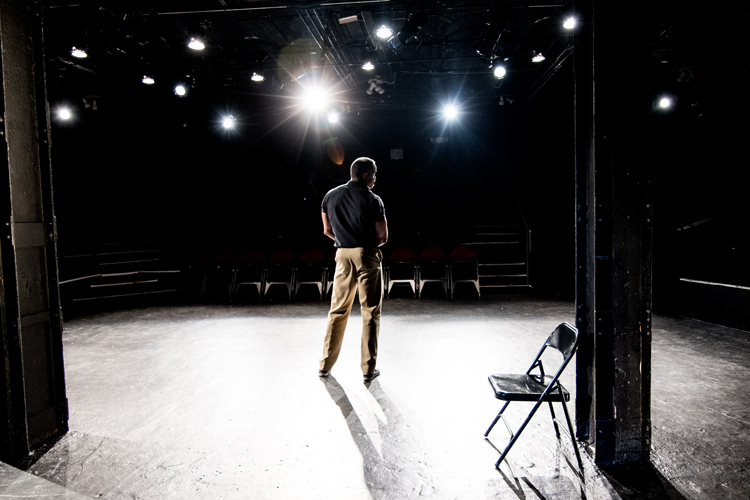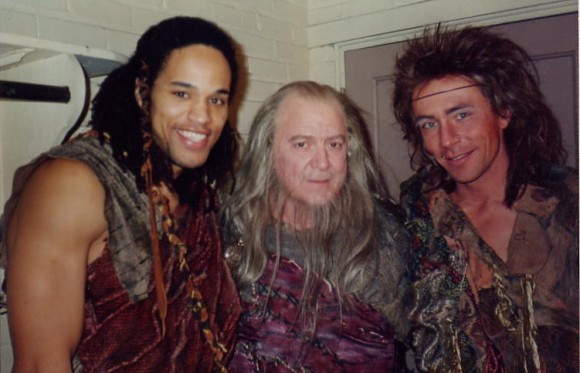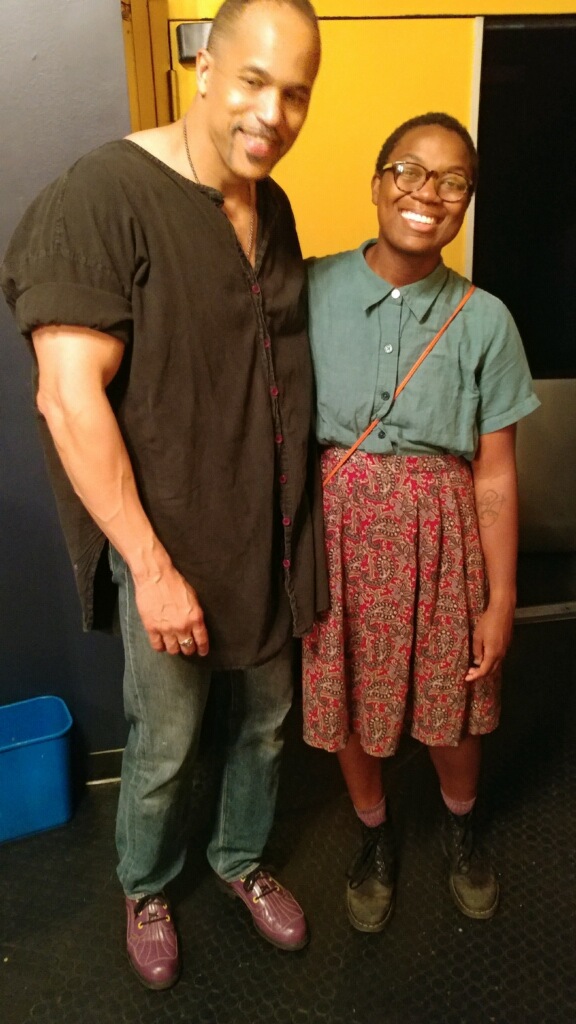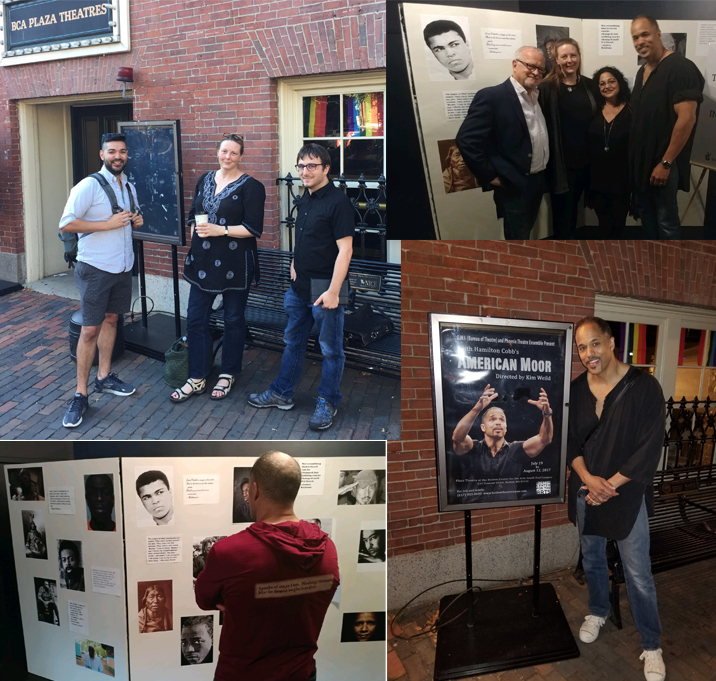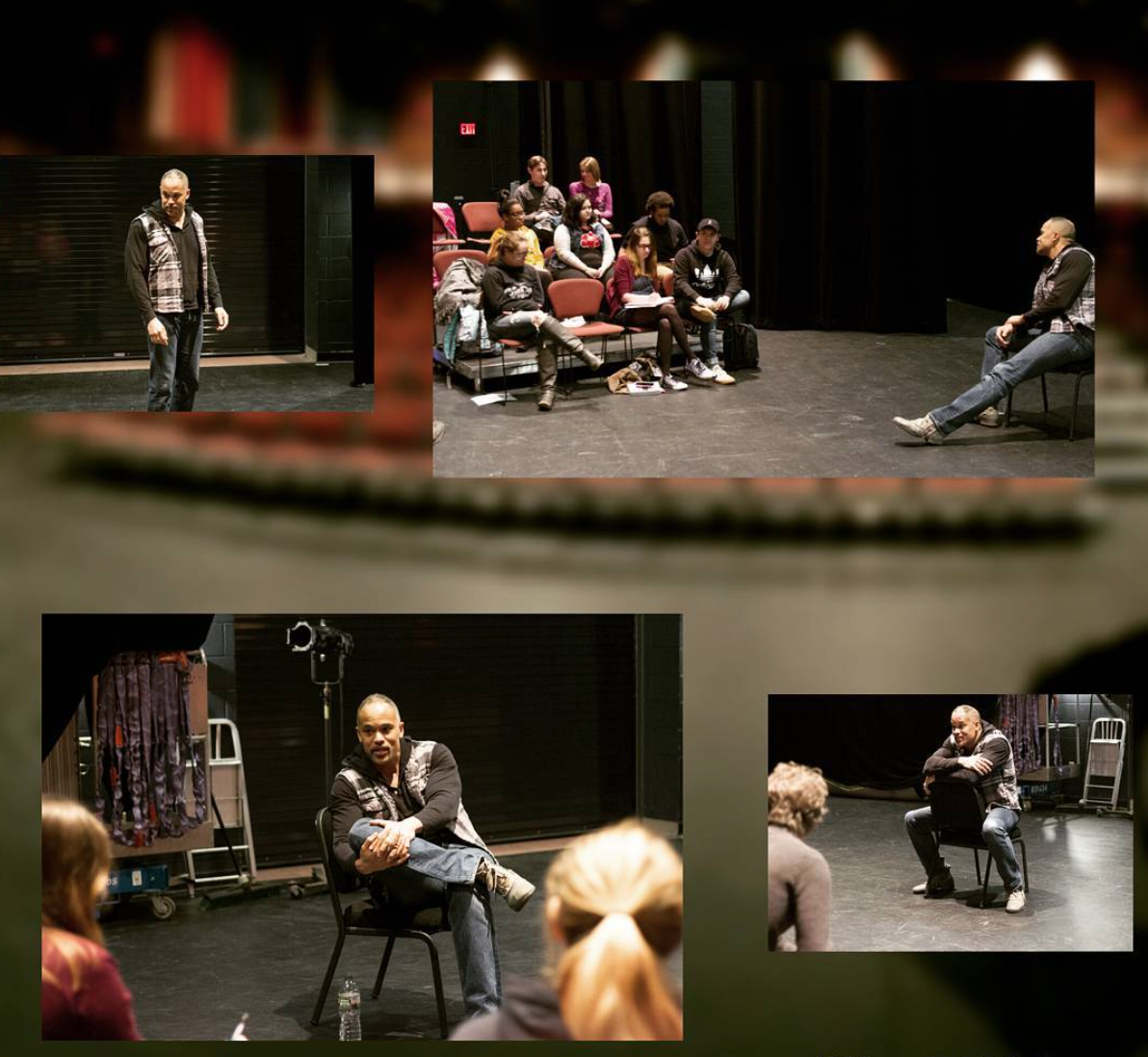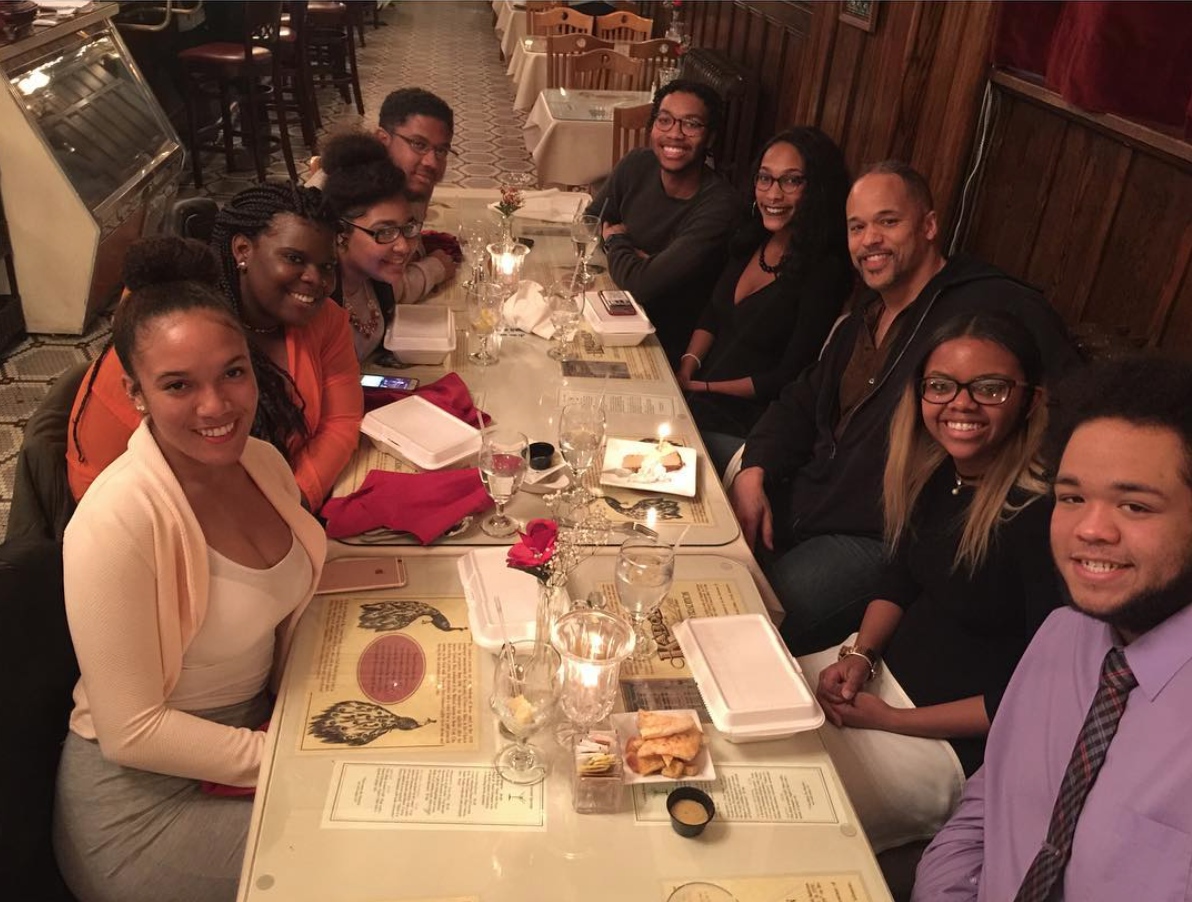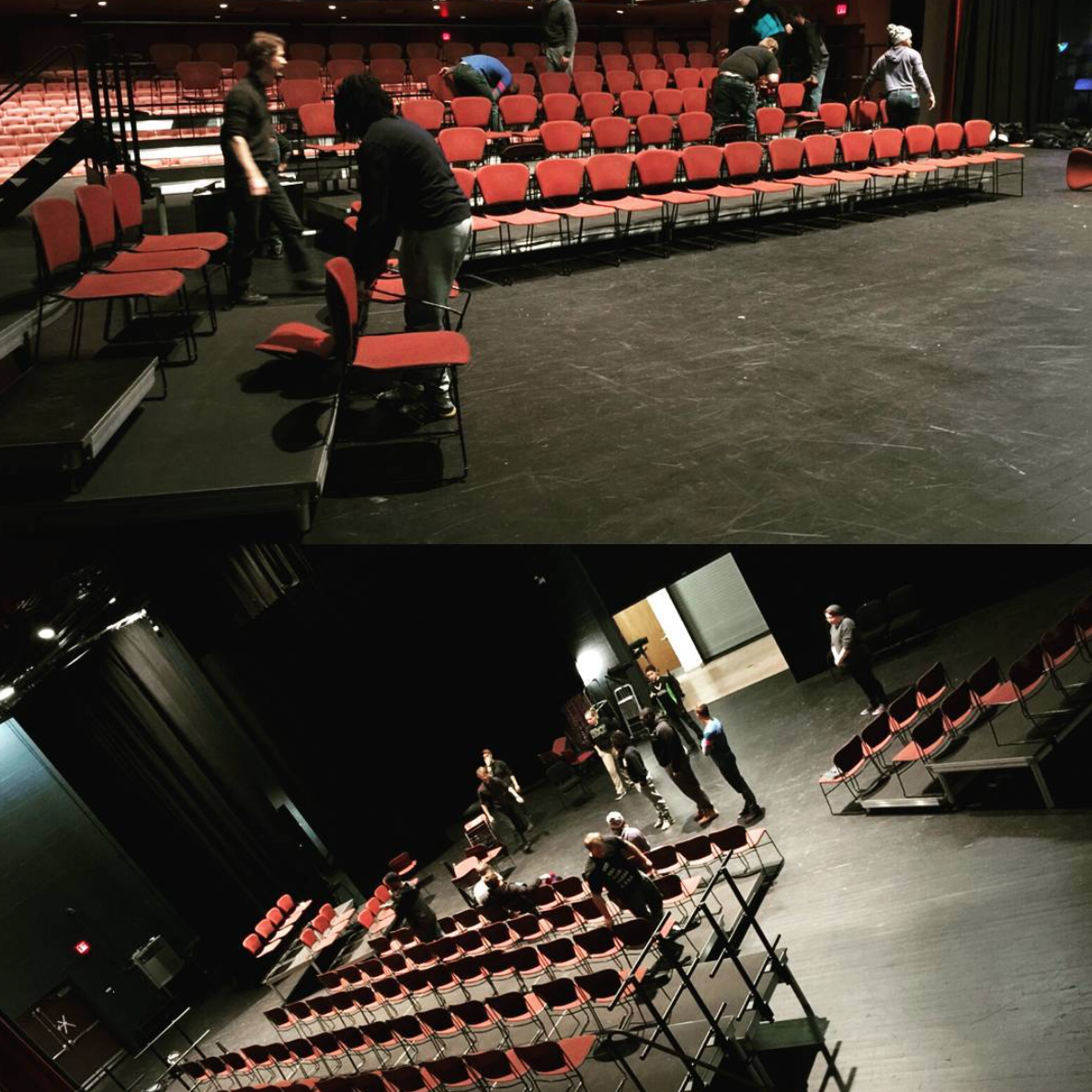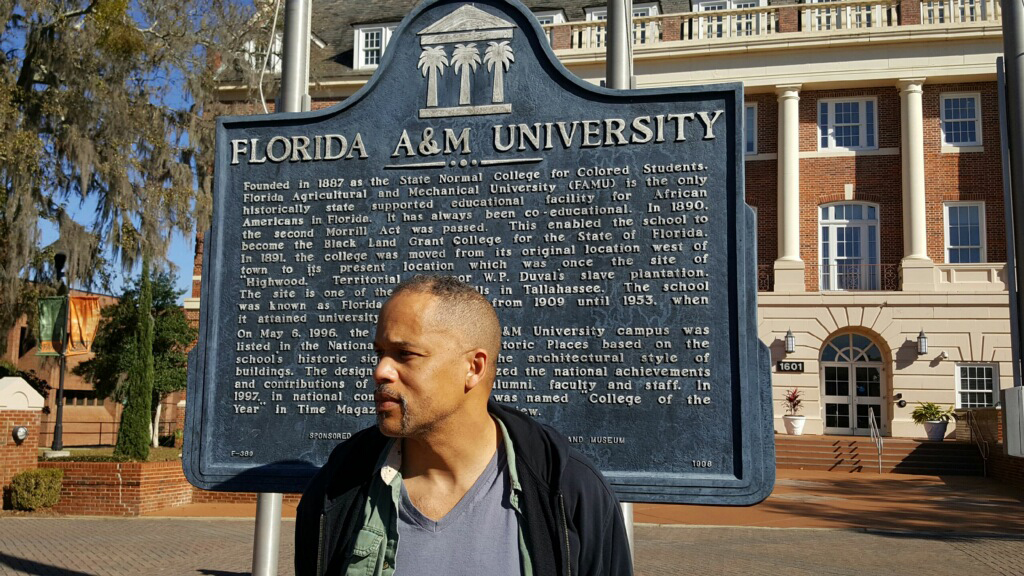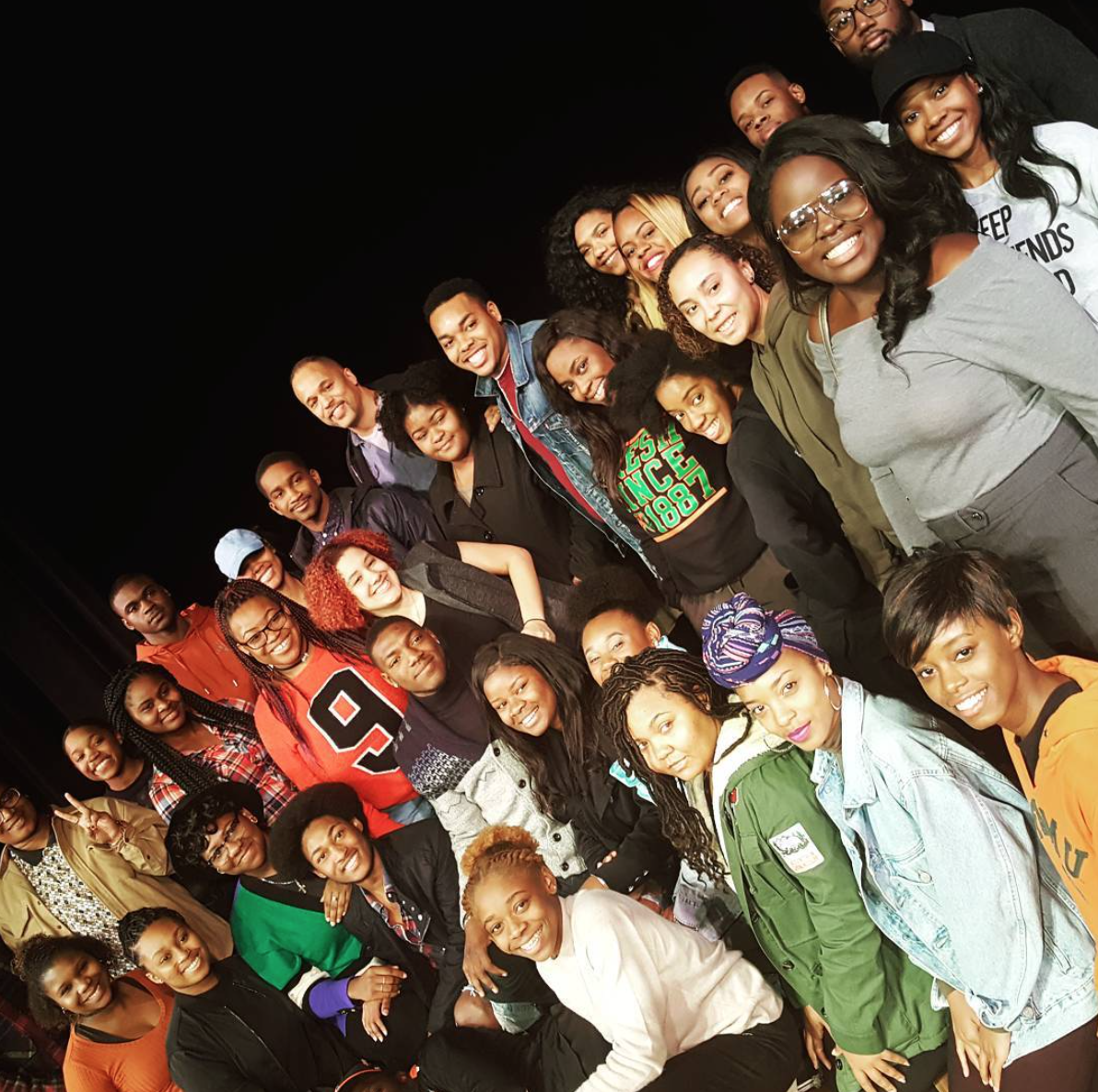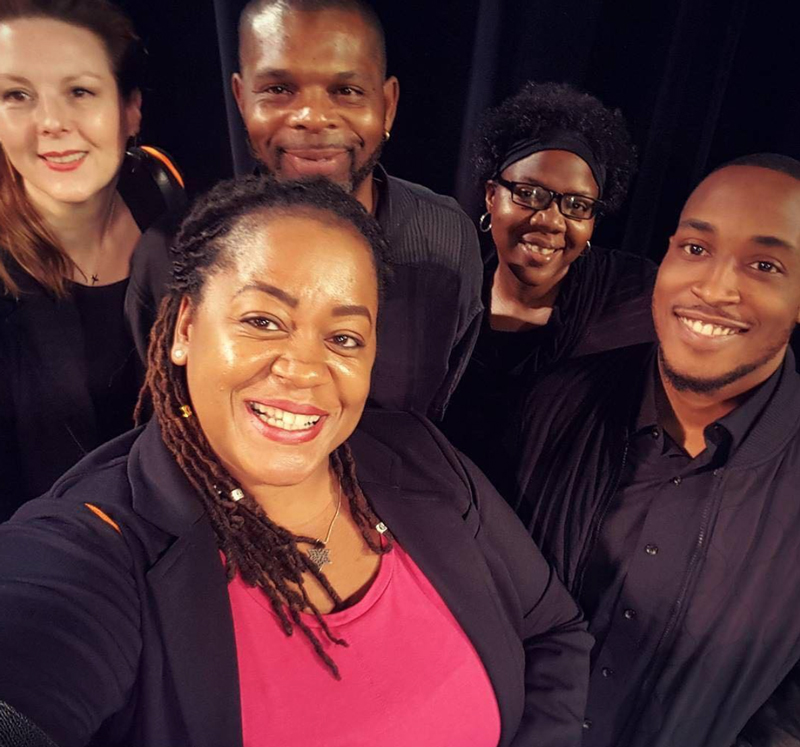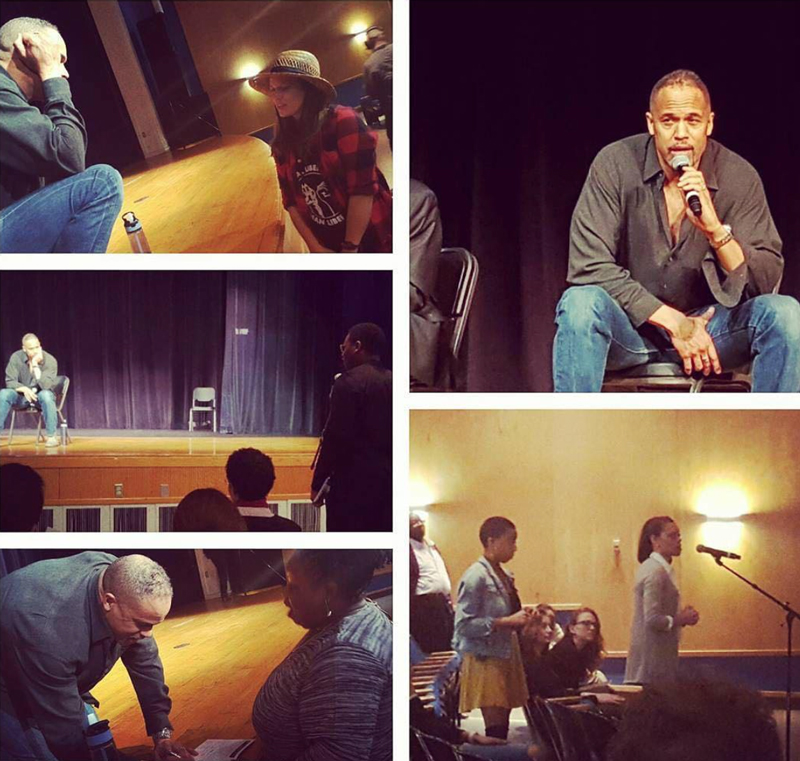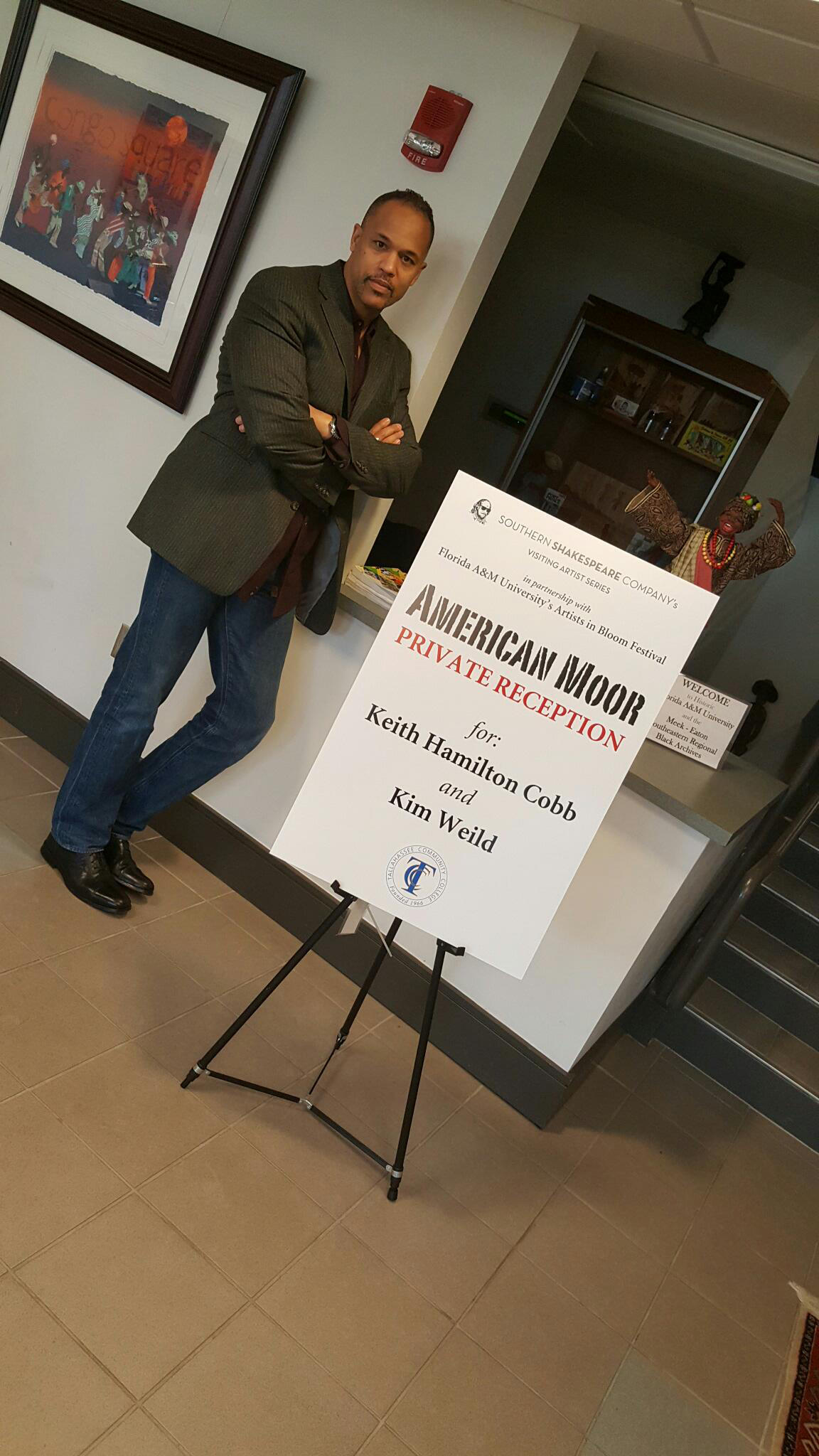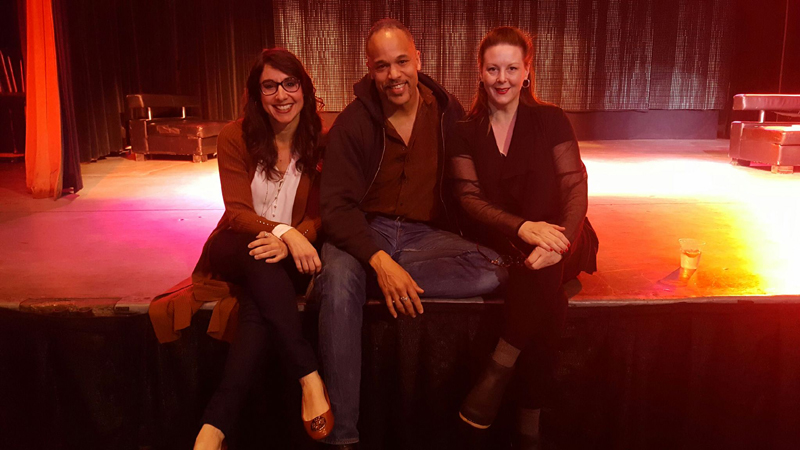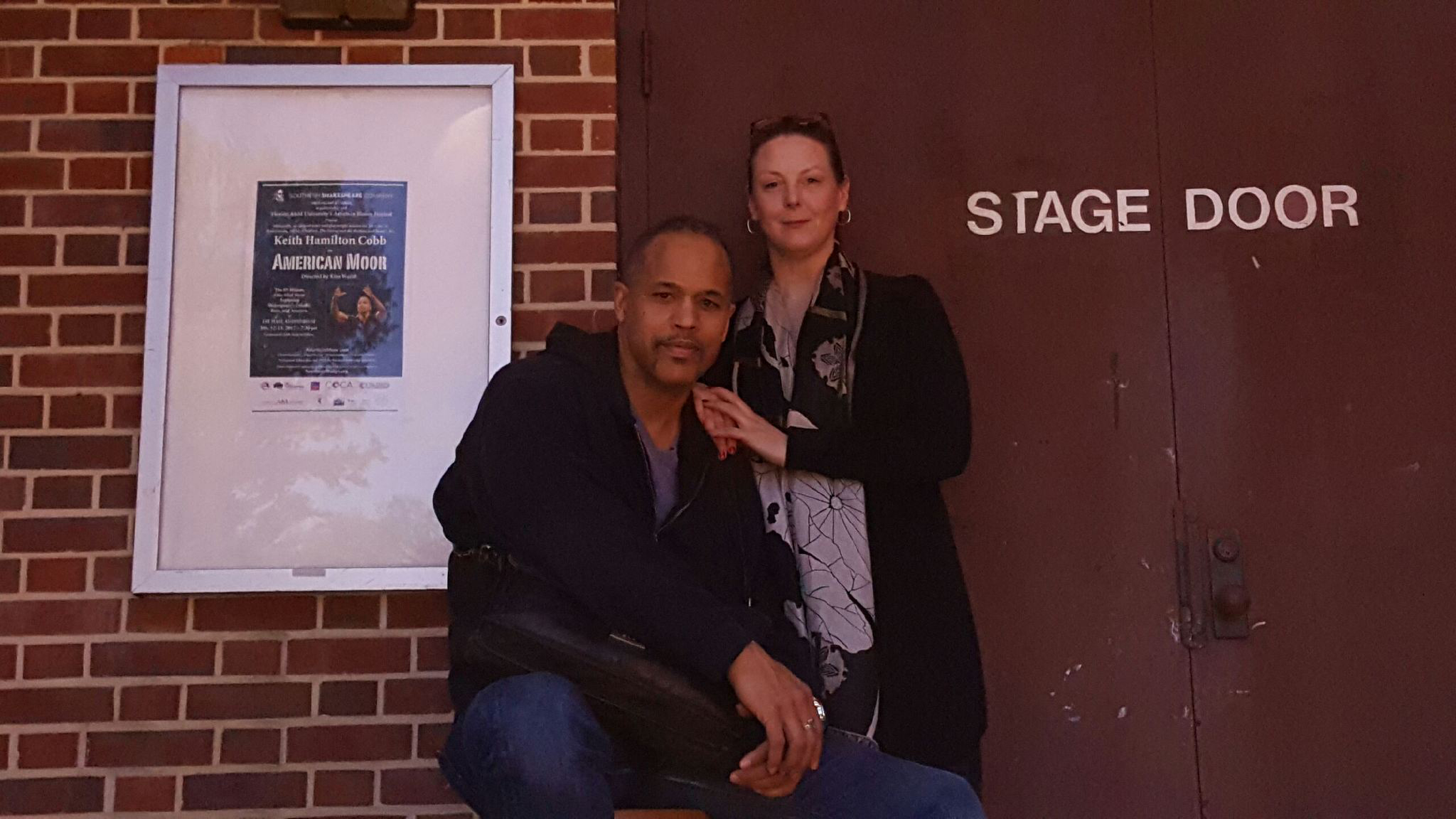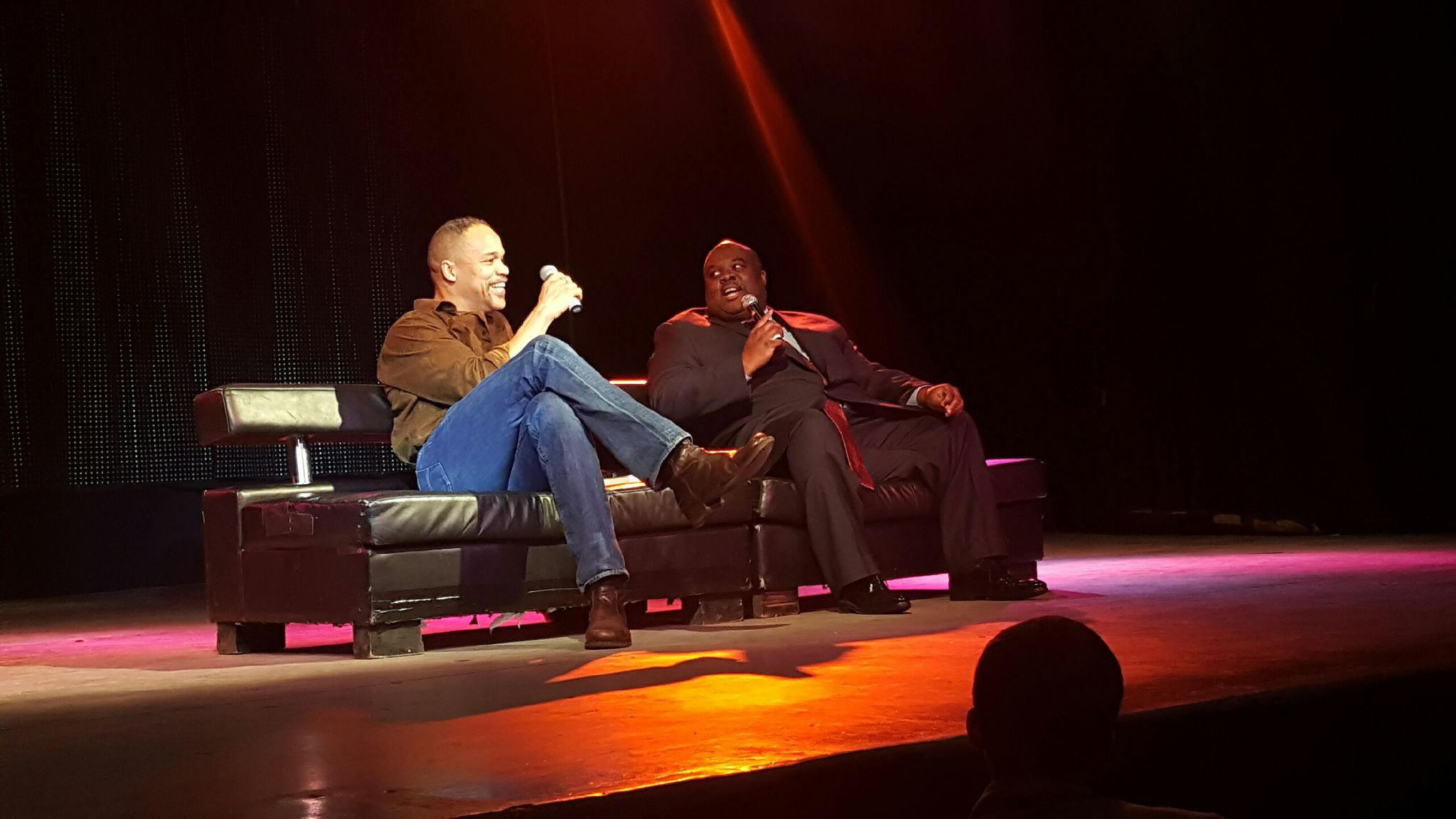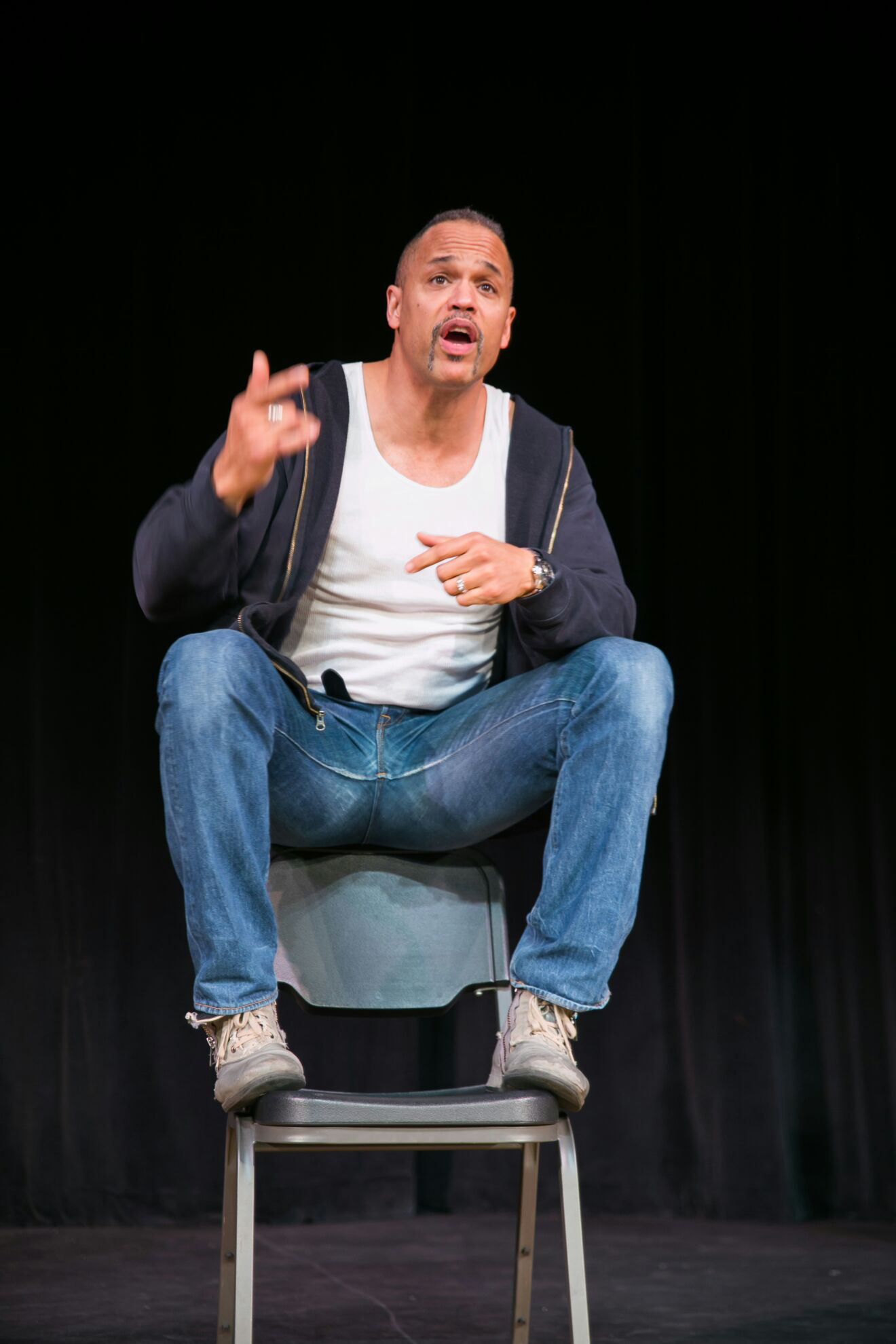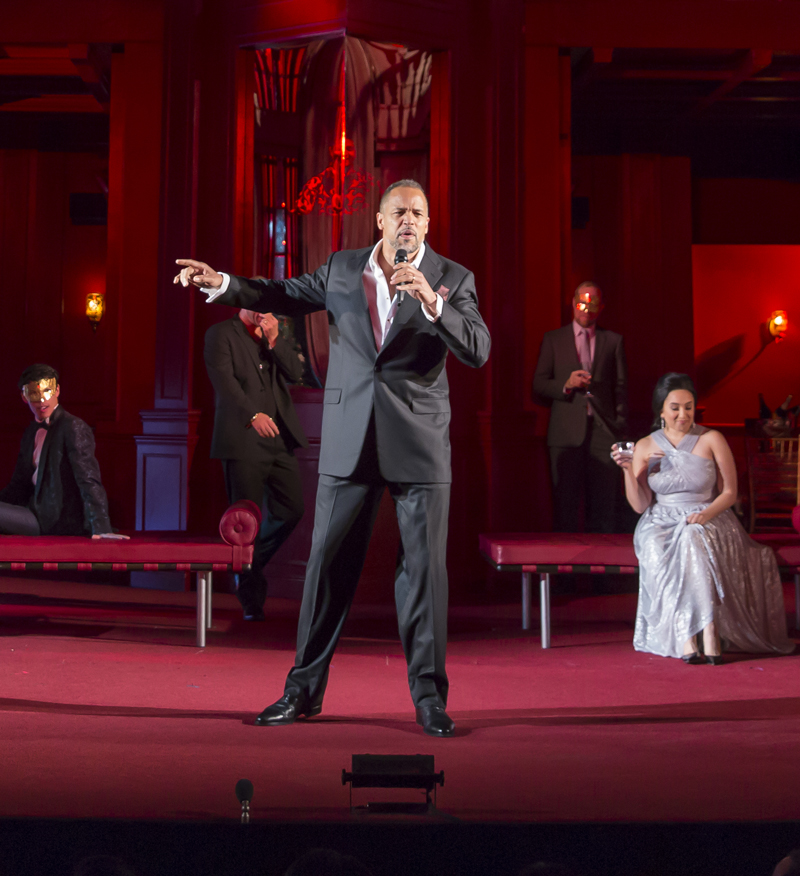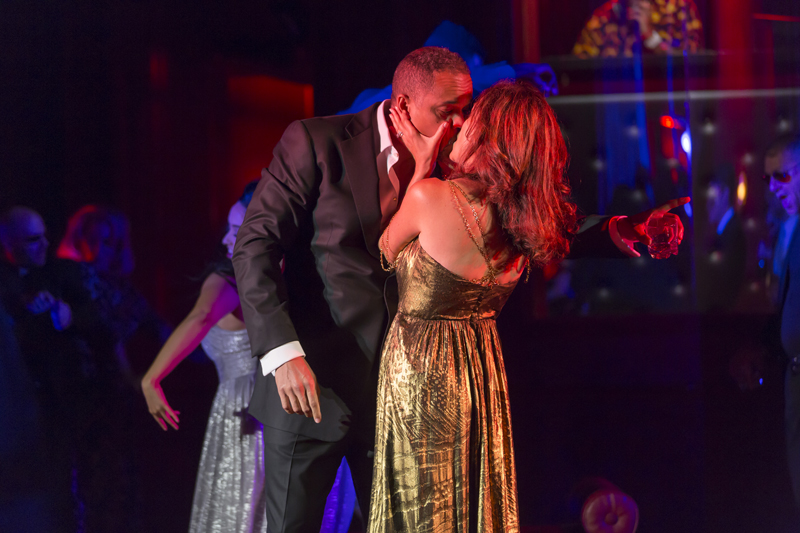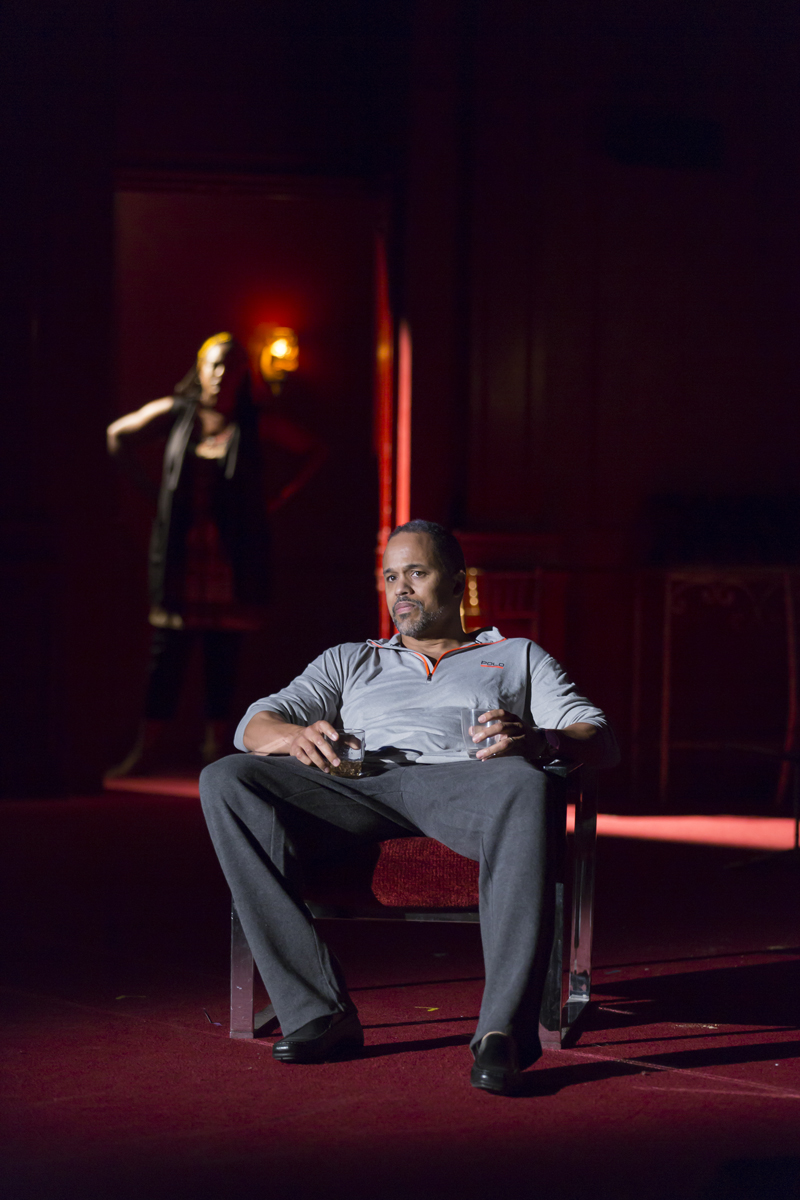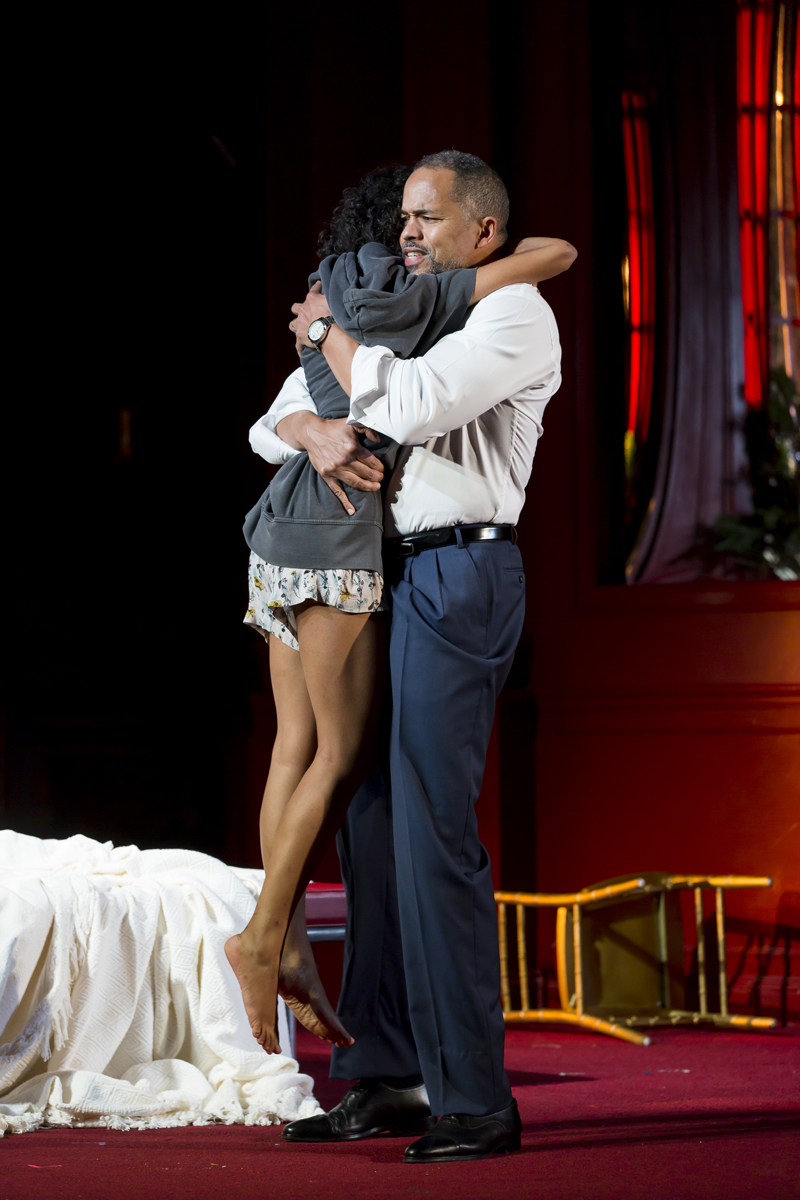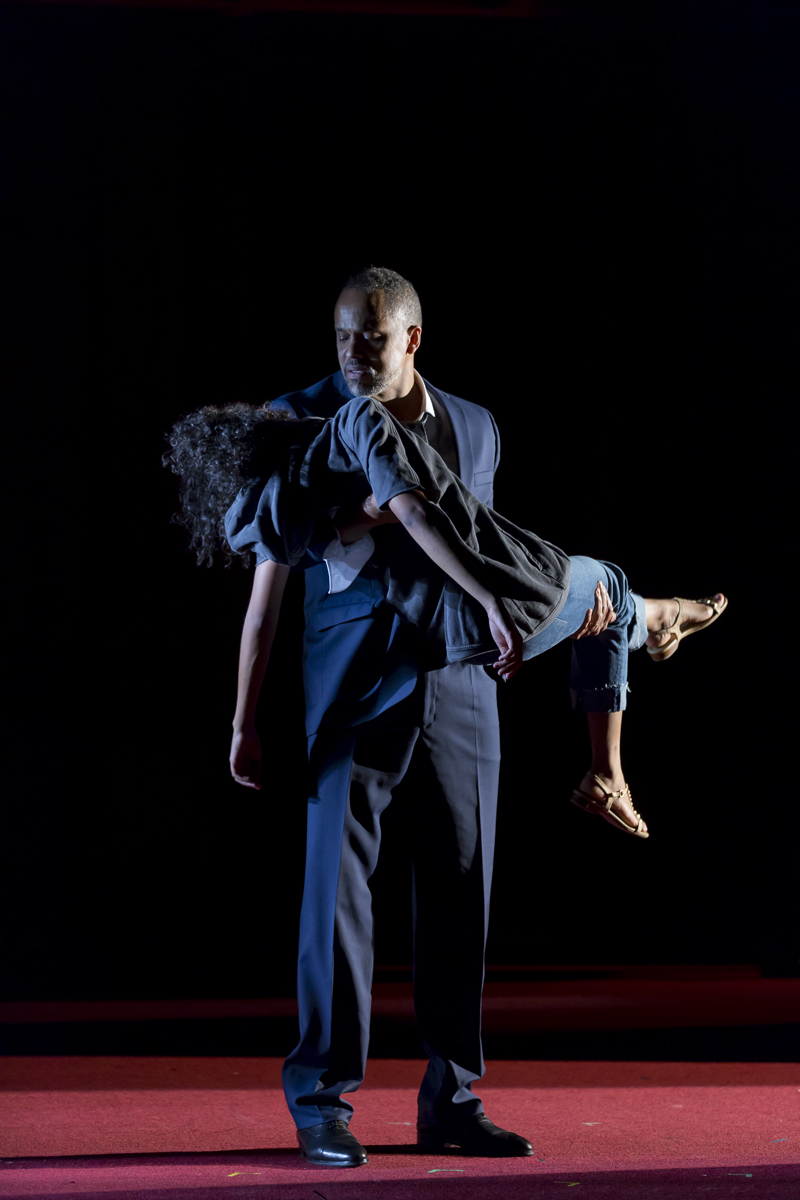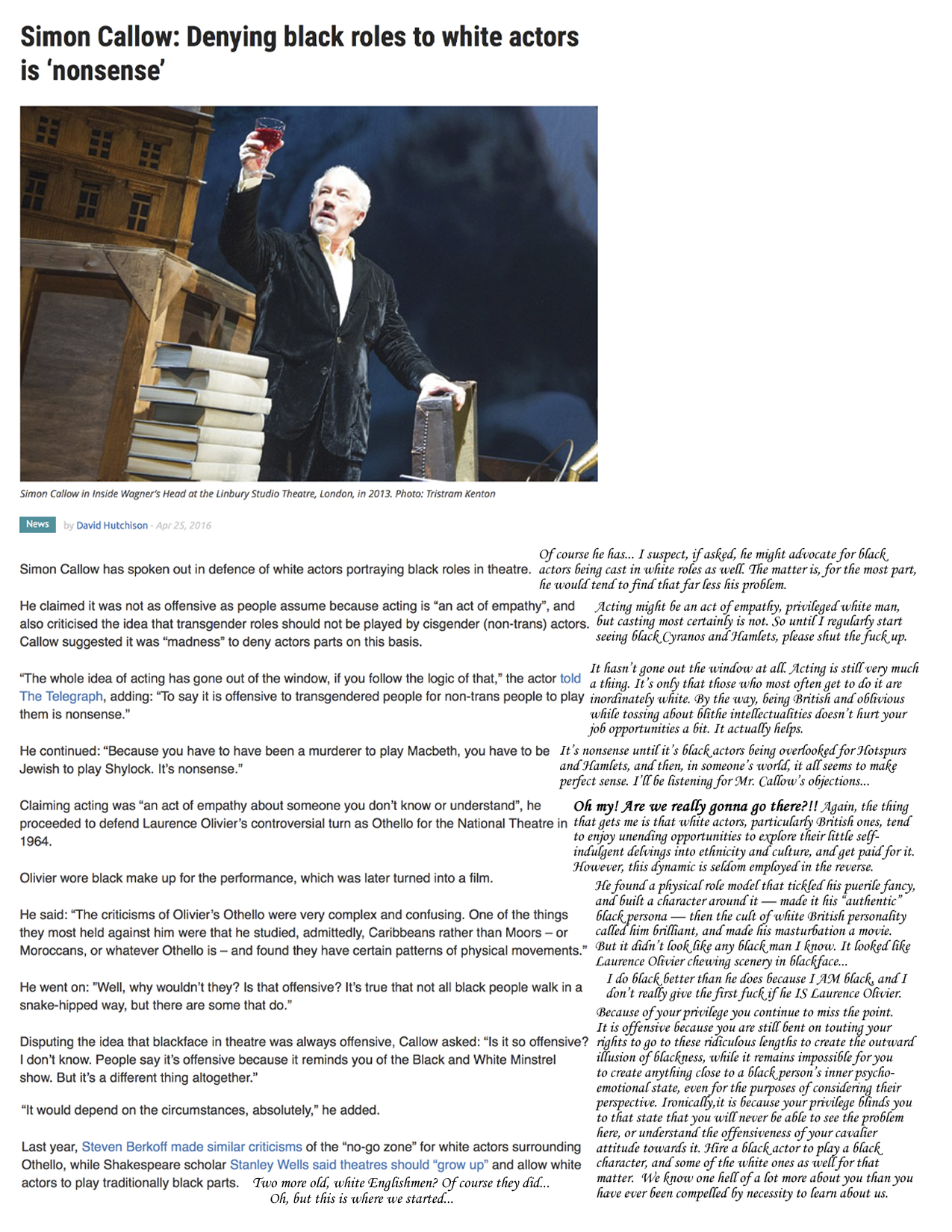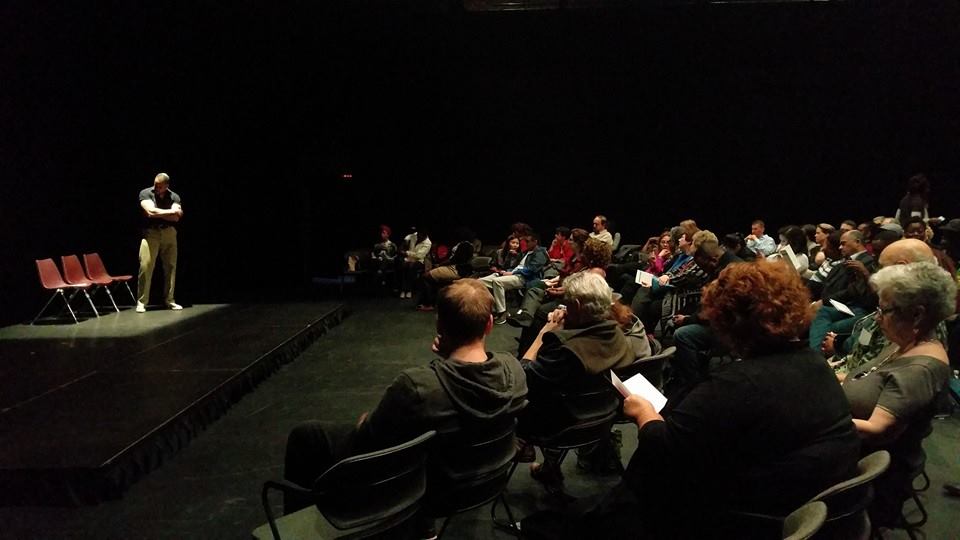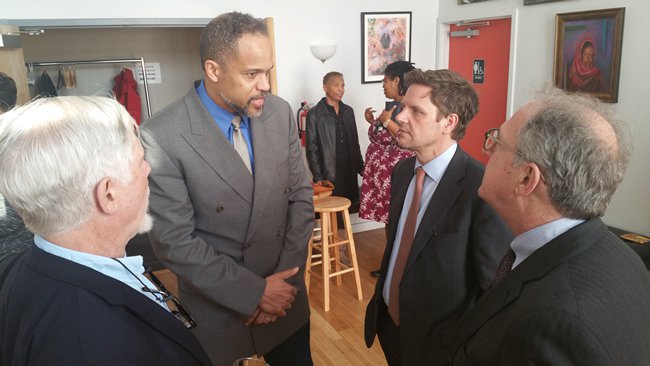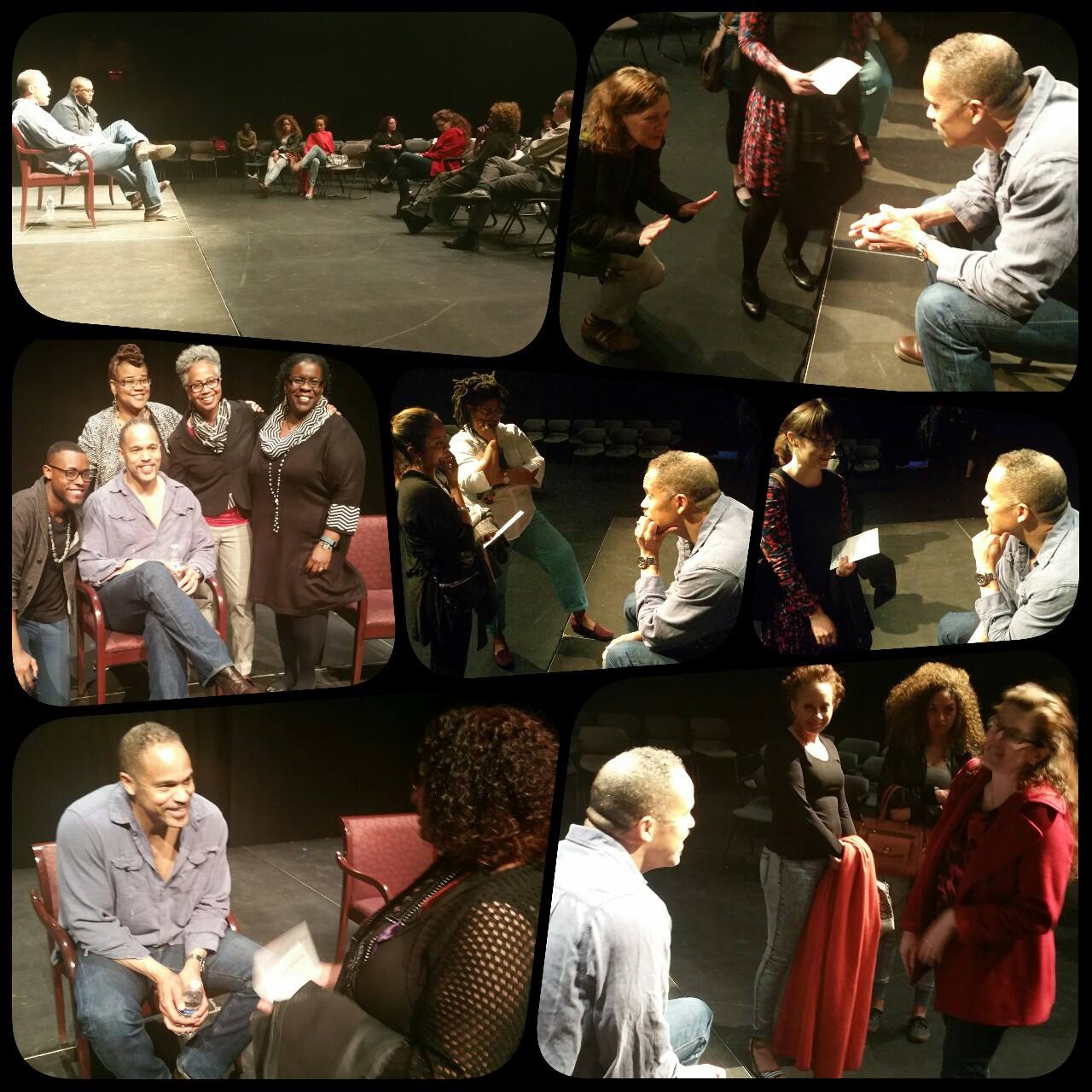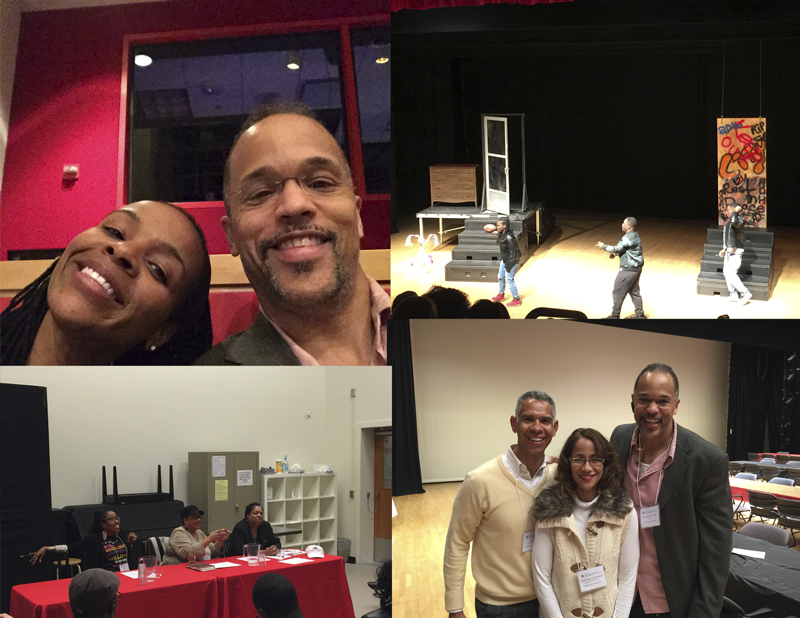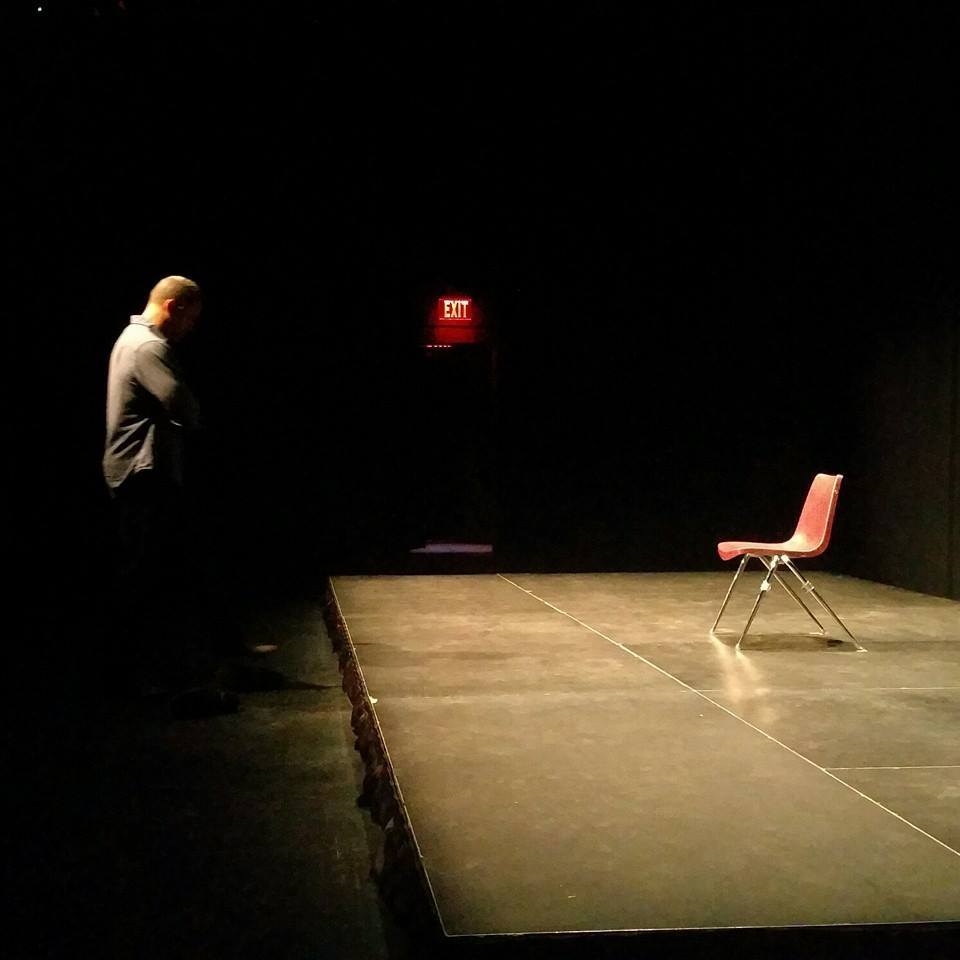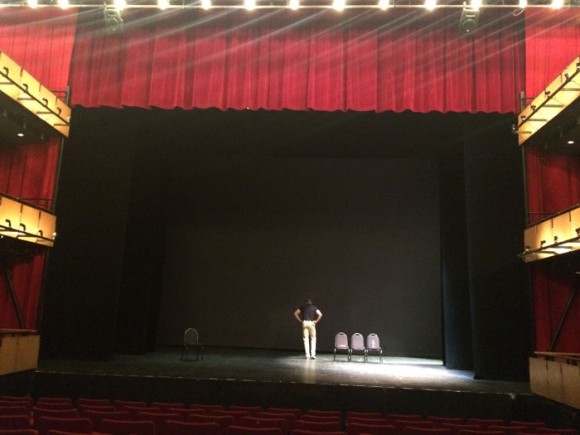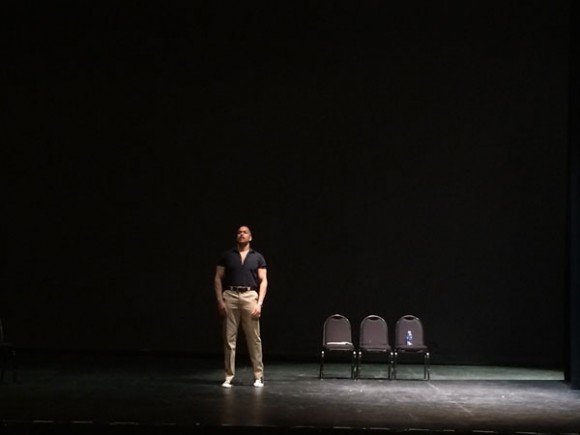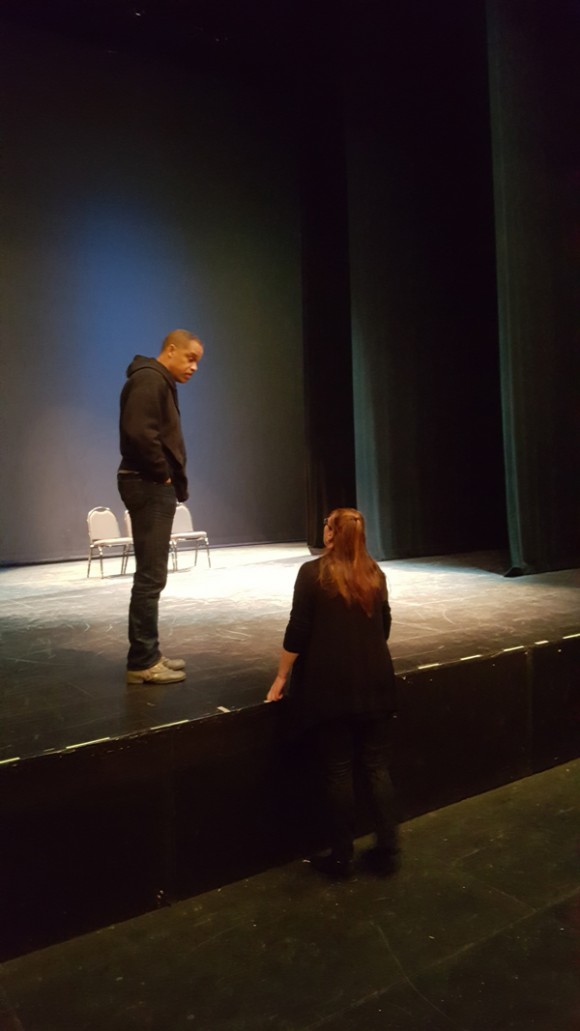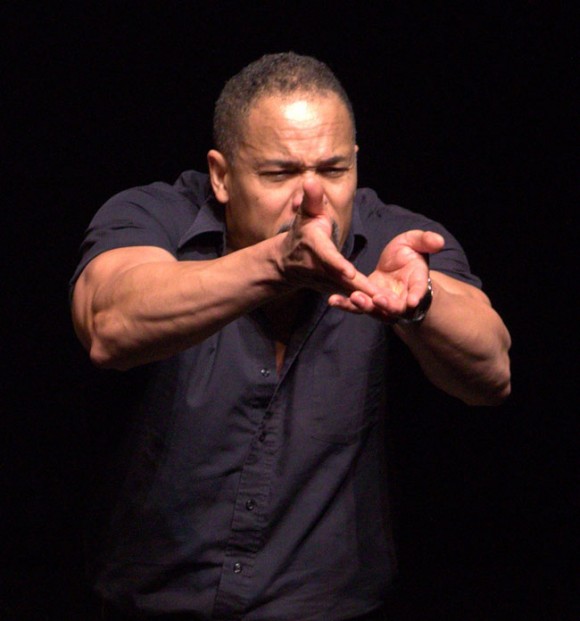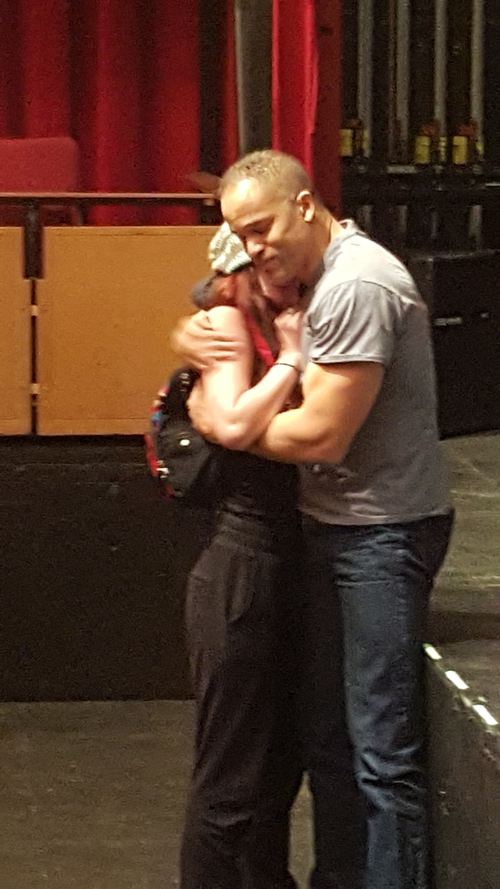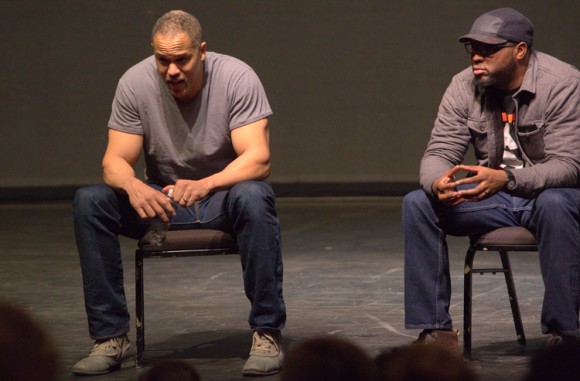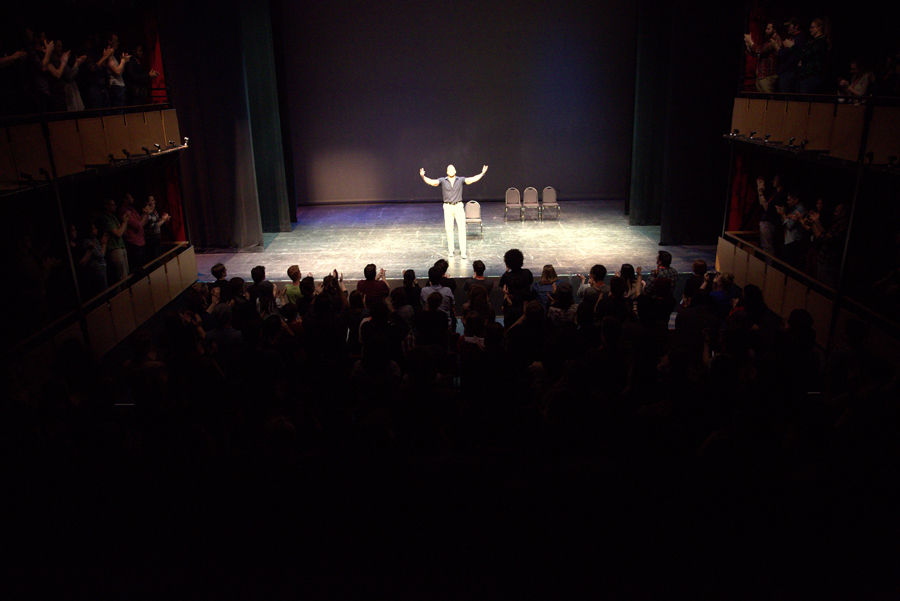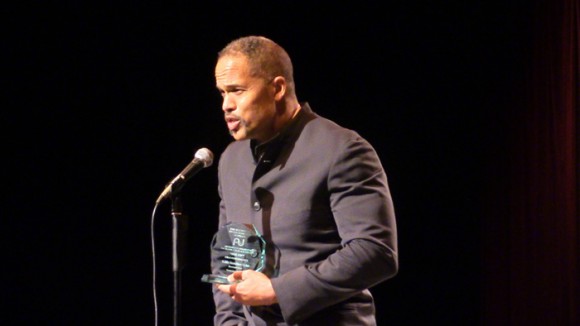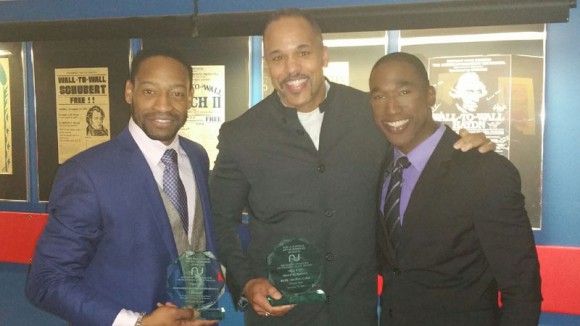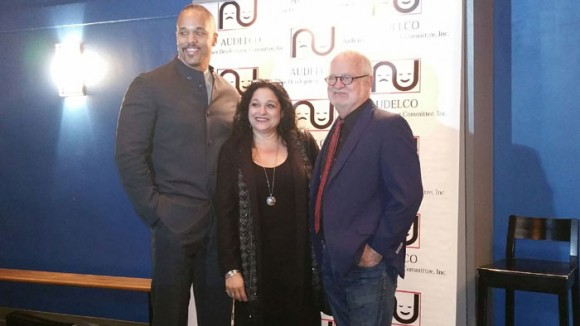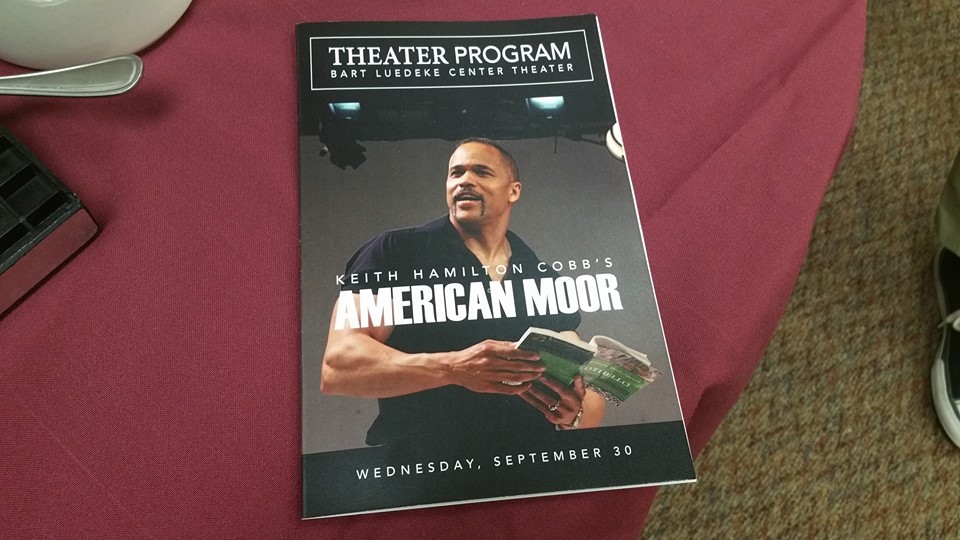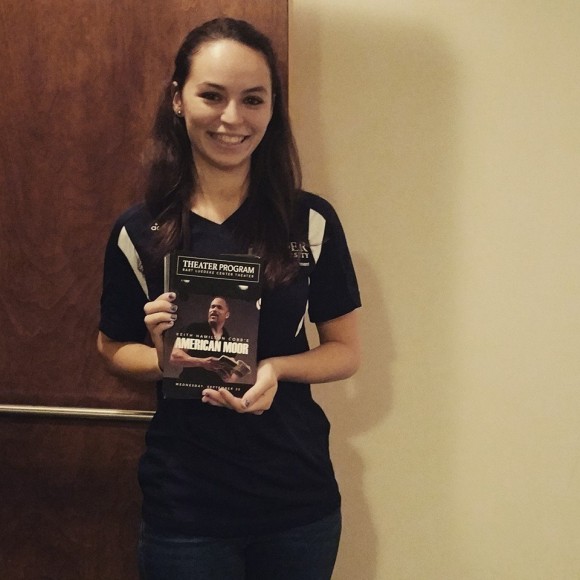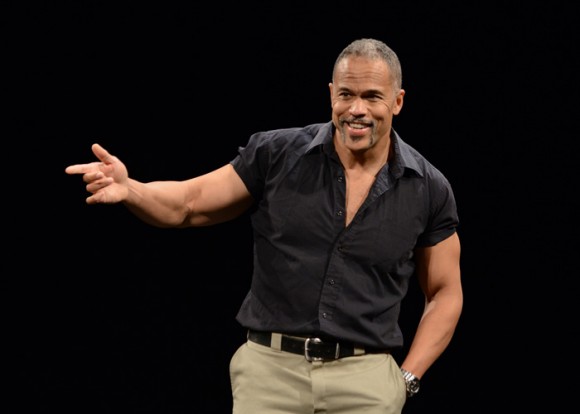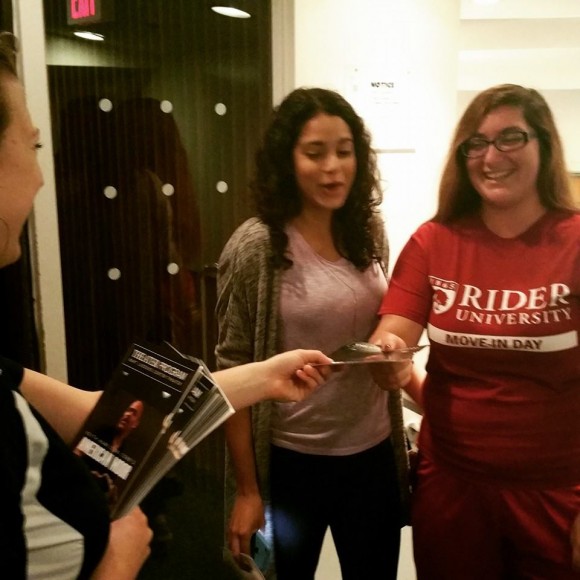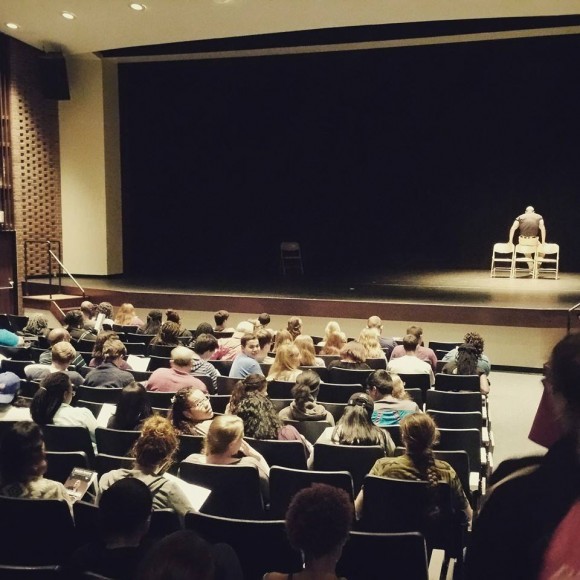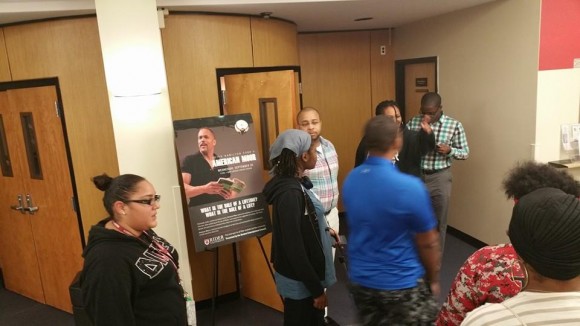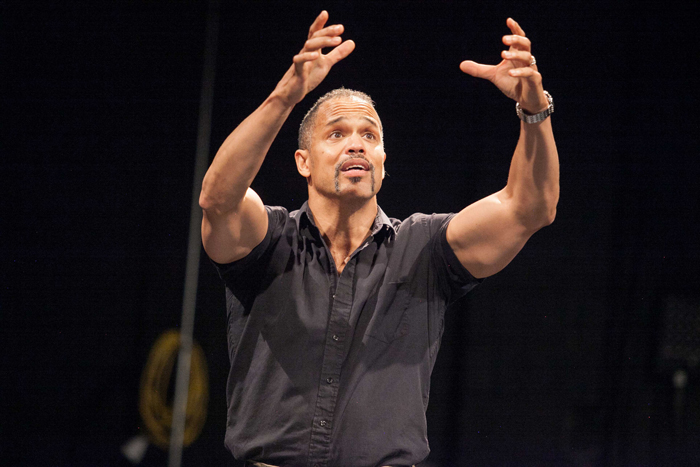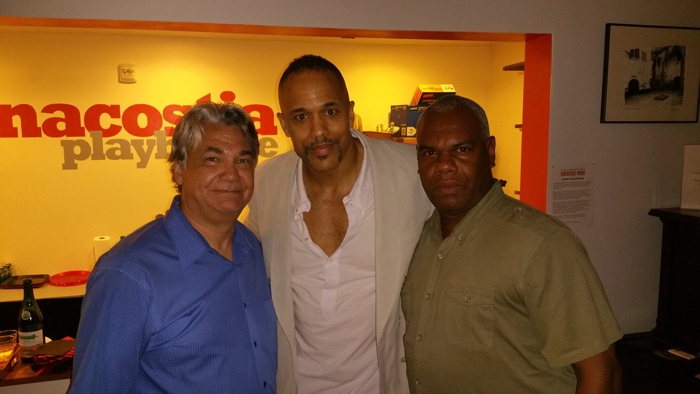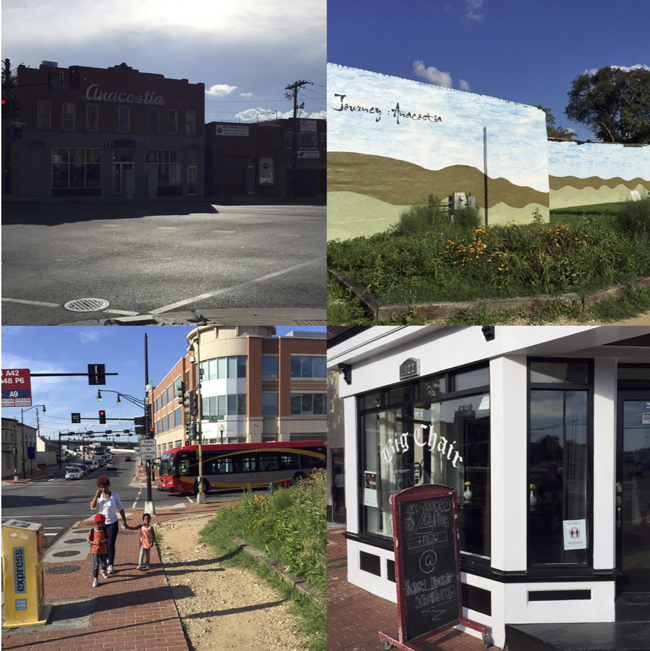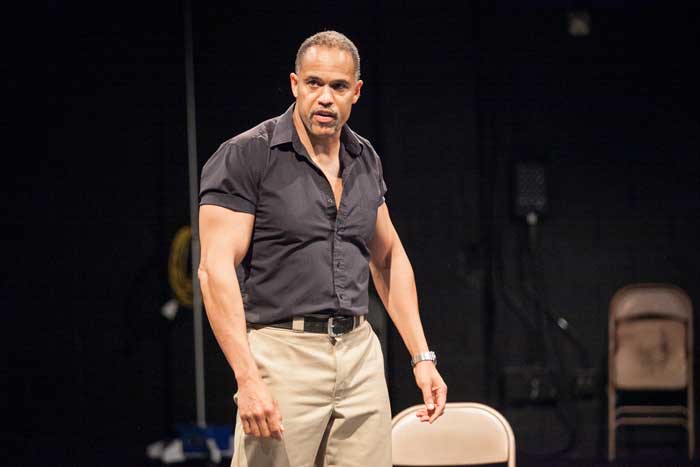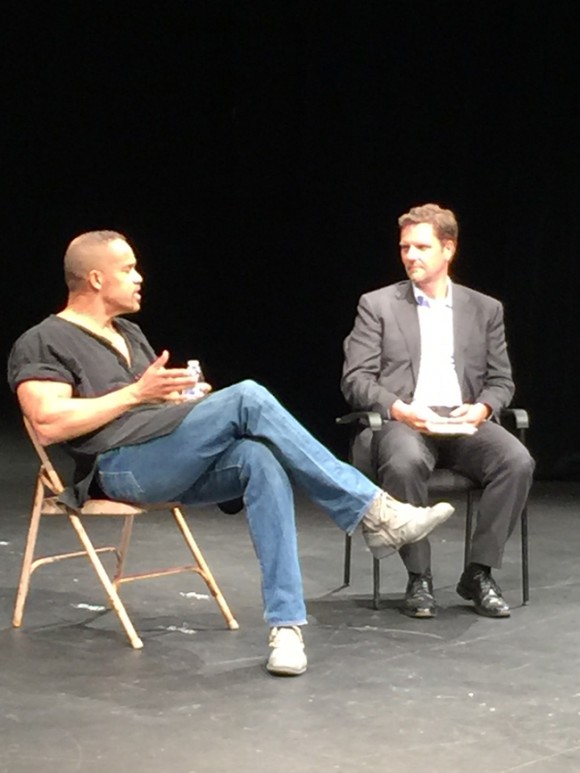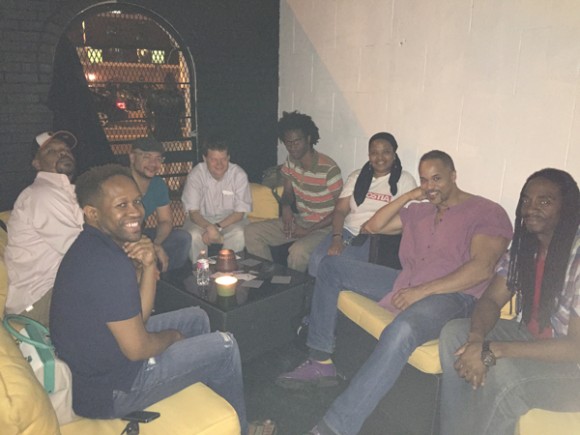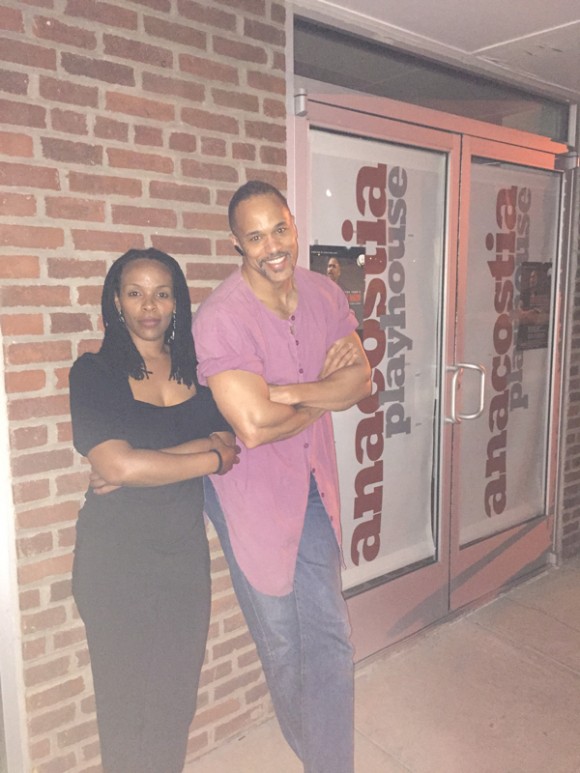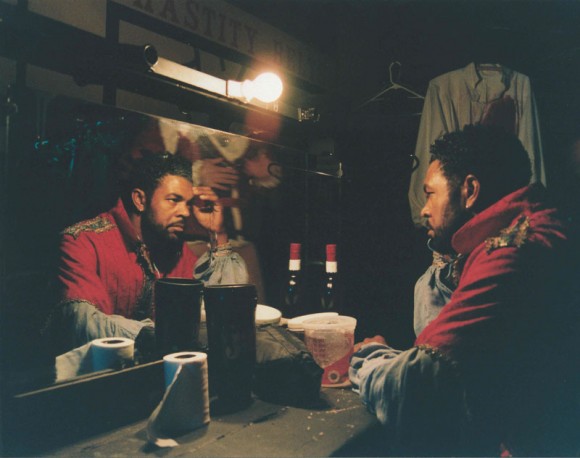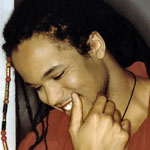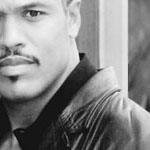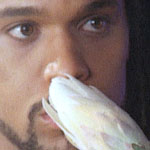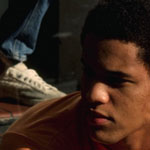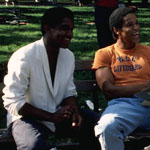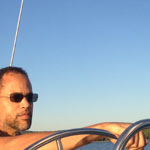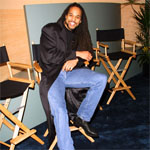A Brief Diary of Phoenix Theatre Ensemble’s Production of American Moor
from the perspective of an American Moor
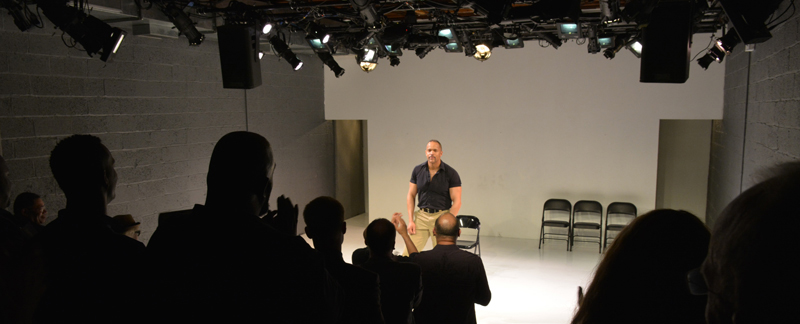
Opening Night of “American Moor” in New York 4/21/15
This April into May has been two months of revelation. Making the work, as arduous as it can be in so many ways, is always a whole lot more fun that looking for the work. This work grew and attention grew for it. It showed me people’s capacity to listen and consider with expansive minds and hearts. It also showed me the poster children for the very argument of the play, those that see first, identify what they think they are seeing, then don’t hear or consider another thing after that, other than what is defined by what they think they saw. I had one remarkable reviewer write, “…Enter Cobb, a large black man, anxiously awaiting the call of the casting assistant as he proceeds to unapologetically disturb the entire waiting room with his nervous behavior…” I sit and wander about for fifteen minutes at the top of the show as the audience enters in a small area upstage where three chairs are illuminated to give the impression of a waiting area. There is no one in the space but me… What did he see? If he and I were equivalently cop and black man waiting anxiously for a bus, would he have said, “He looked suspicious.”
“He did? Why?”
“Well, he was behaving erratically…”
“Really? How so?”
“Well, he was standing up and sitting back down a lot.”
“Was there anyone else there waiting?”
“No… But I assumed that there would be…”
“But there was no one there at the time… So what was the problem?”
“He was behaving nervously…”
“Perhaps he was nervous. Is that a crime?”
“No.”
“Do you mean, he looked like he might be dangerous in some way, because he was black, and moving, and engaged in some sort of mental process… and alive?”
“Well, no… I don’t mean that at all…”
“Oh… Well, what do you mean?”
“I mean he looked suspicious…”
Such critical voices were in the minority over the run of the show. I would like to believe that there are fewer and fewer of them as it gets later into the 21st century, but I think the more accurate assessment is that fewer of them saw any reason to attend a play about race in America in the first place… I could be wrong about this. I hope I am. Time will reveal as we continue on. But it was an extraordinary moment, his reactions to the play. One among many extraordinary moments at The Wild Project during the run of “American Moor.”
Monday, 4/20
The final dress rehearsal was strong. The four or five people sitting in the house were moved… at least that’s what they told me… When you are mounting a show, even a “one-man” show on a small budget, so much time and energy goes into doing all sorts of things besides acting, and I am left never knowing what’s going to be there when the time comes to hit the stage. Judging from the reaction, I guess something was there… “American Moor” is a theatre piece fraught with intense emotion. It is great to hit all the notes when you only have to do it once. To know that, after the final dress, you have to get up and out and do it several more times can be quite daunting. But for the moment, I was happy.
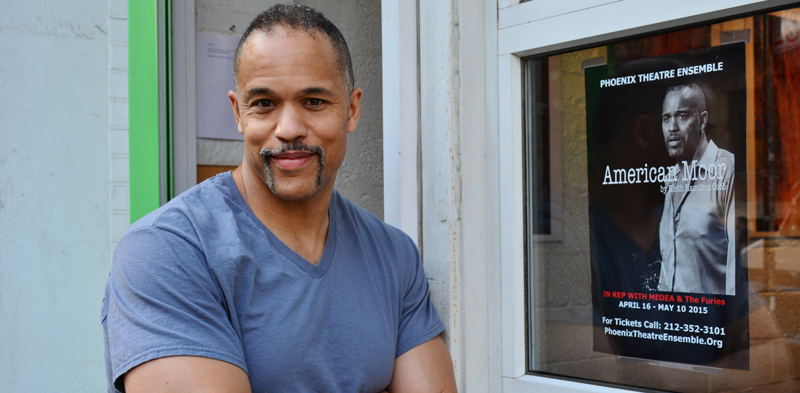
Tuesday, 4/21
Opening Night
Well, whatever was there at the dress rehearsal had, at least to some extent, taken the night off. I’ll never know what that is… Just bad acting skills, maybe, but I could not access that same deep-seated well of emotion that, on other nights, just wells up for me in this piece. I mean it was there. It’s all through the play, that age-old emotion; that’s what the play is about. But somewhere around page fifteen or so of the thirty-two pages it just began to feel like there was still a long way to go to the end. The Wild Project is an eighty-nine seat house, and if the audience were seated any closer they would be on-stage. In addition, the set has a white floor and white rear wall. This was the first time that we had tried anything like this. Previously, we have always performed in a completely blackened space. Necessity required that we do it this way, and I have to say that I think it added something to the metaphor — the black man in the entirely white space… However, when it is lit, all the light reflects into the house illuminating the audience as well. 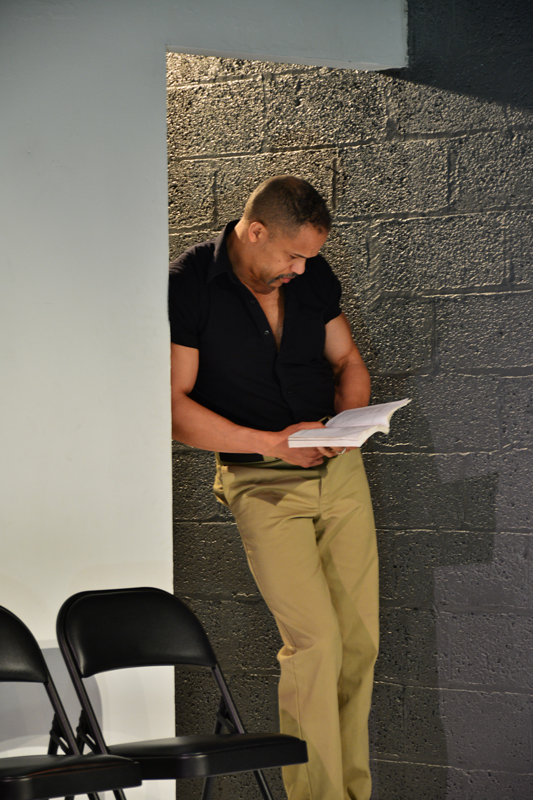 If someone in that intimate little house scratches their nose, I can see them. Nose-scratching, like coughing, is a sure sign that the audience is not focused on what you are doing on-stage… Alright, that’s not true, but again, alone on-stage, and not feeling one hundred percent in the work, there is this snowball effect that happens where everything that you’re experiencing serves as another distraction that pulls you further and further out of where you’re supposed to be, and ultimately you find yourself just struggling to find the end, when you will be mercifully allowed to exit the stage. I guess it’s a thing about how, having done, or let be done all of this hype about how wonderful a piece of theatre it is you have made, then standing out there and realizing, or at least feeling as though you are not delivering that to this house full of people who have bought your self-aggrandizing pitch, and bought a ticket. And then what? It ends up being completely a projection, of course. You are feeling like it’s not getting across; that it’s boring, or clunky, or some other thing that is not good. And so you put that on the guy who just shifted in his seat, thinking, “He hates me,” while, in fact, he’s totally enthralled and hanging on your every word…
If someone in that intimate little house scratches their nose, I can see them. Nose-scratching, like coughing, is a sure sign that the audience is not focused on what you are doing on-stage… Alright, that’s not true, but again, alone on-stage, and not feeling one hundred percent in the work, there is this snowball effect that happens where everything that you’re experiencing serves as another distraction that pulls you further and further out of where you’re supposed to be, and ultimately you find yourself just struggling to find the end, when you will be mercifully allowed to exit the stage. I guess it’s a thing about how, having done, or let be done all of this hype about how wonderful a piece of theatre it is you have made, then standing out there and realizing, or at least feeling as though you are not delivering that to this house full of people who have bought your self-aggrandizing pitch, and bought a ticket. And then what? It ends up being completely a projection, of course. You are feeling like it’s not getting across; that it’s boring, or clunky, or some other thing that is not good. And so you put that on the guy who just shifted in his seat, thinking, “He hates me,” while, in fact, he’s totally enthralled and hanging on your every word…
Opening night reception, and festivities tell this story. The audience effuses gratitude and praise. Unless they are all lying through their teeth, I am left with the impression that they were there all along, thought for thought, word for word, and deeply affected by what those words conjured within them. 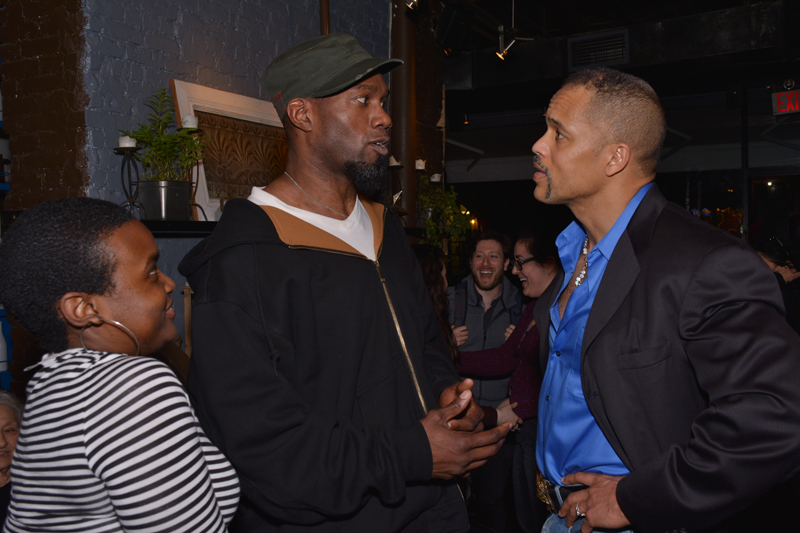 In the wake of such responses after such opening nights, I am compelled to realize that the play is the play. I may be feeling any number of things on-stage during any given performance that have nothing to do with the text, or the truth, but the words seem to put something important and impactful across with or without my help. I hadn’t left the building. I was there. But there are performances when moments in the arc of the play shake me to my very core, and strike me as though some force is speaking through me for the first time. When I don’t feel those, it doesn’t mean that the power of the piece has fled. It means, perhaps that I’m carrying it, instead of it carrying me, but either way, it is being conveyed.
In the wake of such responses after such opening nights, I am compelled to realize that the play is the play. I may be feeling any number of things on-stage during any given performance that have nothing to do with the text, or the truth, but the words seem to put something important and impactful across with or without my help. I hadn’t left the building. I was there. But there are performances when moments in the arc of the play shake me to my very core, and strike me as though some force is speaking through me for the first time. When I don’t feel those, it doesn’t mean that the power of the piece has fled. It means, perhaps that I’m carrying it, instead of it carrying me, but either way, it is being conveyed.

Josh Tyson who enacted the role of the director.
It never means that I am not being an adequate vehicle for the conveyance of this particular poetry.
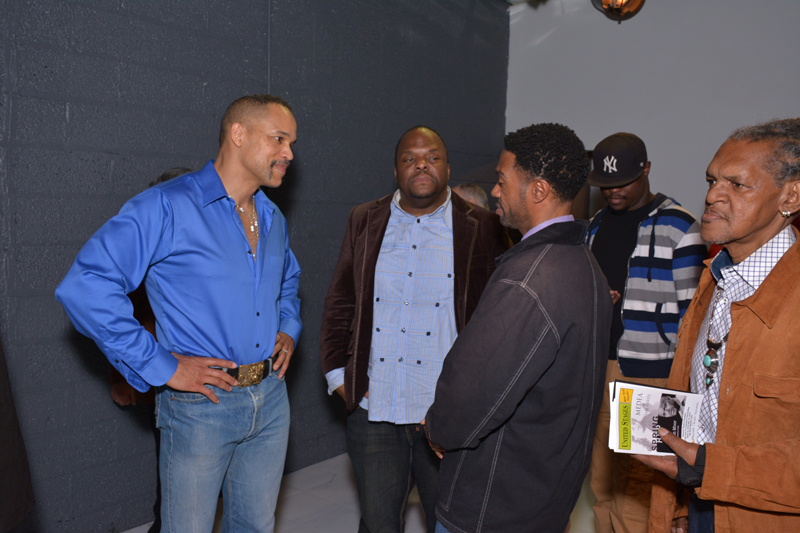
w/ Kevin E. Taylor and a group of Brothers that he brought from Newark.
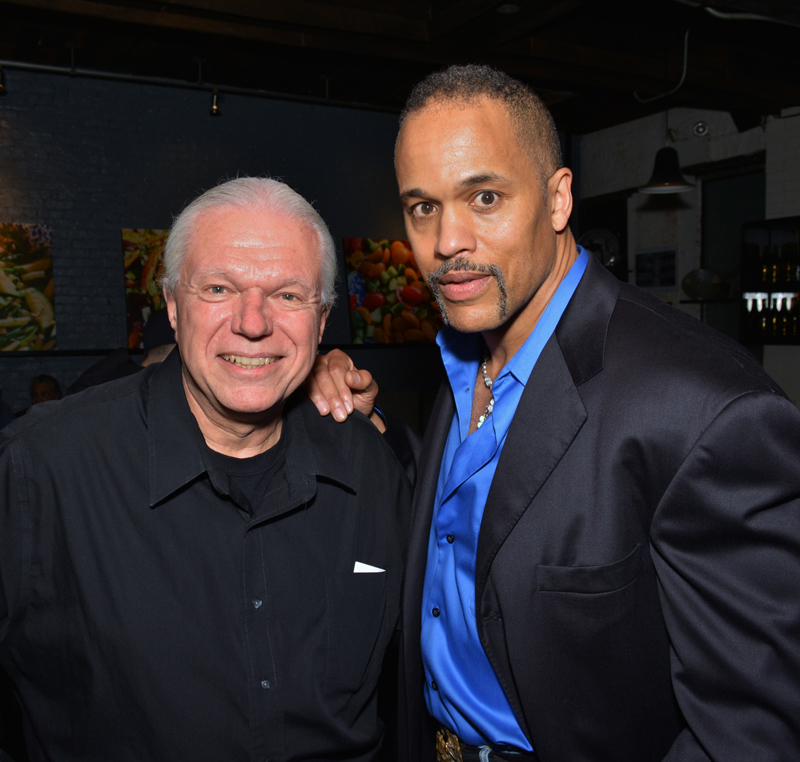
Brent Buell, my first creative consultant on this work.
Wednesday, 4/22
This was a long day, with a 2pm matinee performance for a small house, meant specifically for the press. But it was a strong show, as was the second on that evening, which was followed by a post-show discussion facilitated by the Reverend Jacqueline Lewis of the Middle Collegiate Church. Reverend Lewis oversees a 900+ poly-ethnic, non-denominational congregation in the East Village. Her post-show attempted to reflect on the work, and people’s reactions to it, from the place of gaining a spiritual awareness, the lack of which is at the root of our communication gap with regard to racial insensitivity in our culture. She raised an interesting point in emphasizing our common humanity, that we might be here in this place and time with white American culture the unheard, and unseen, and black culture wholly unaware and insensitive to it if ancient world events had unfolded differently, but that the dilemma of how to communicate and transcend it would be the same, because the nature of the human animal would be the same, and that it is only a spiritual maturation that will change that, nothing else… That’s what I took away from the evening, in any case…
Thursday, 4/23
Another strong show, I thought, to a smallish house. I am particularly aware of the size of the houses because I can see every seat. The white stage and rear wall with stage lights shining on them illuminate the entire theatre of 89 seats. As meager as the mid-week audience was, however, they seemed rapt, and fully engaged with the process unfolding on-stage.
The Wild Project is about as beautiful a venue as any 99-seat New York City black box theatre for hire as any that I’ve ever seen. I suppose you couldn’t have such a space and maintain it on the income of low-budget theatre if it were located uptown where more people might be apt to come. I’ve seen a few of the tiny, for-hire venues uptown, and to a one they’re ratty little dives that no one would like to spend any more time in then they had to. There are nicer ones over on Theatre Row, but, of course, you pay for every inch closer to Broadway… Down on 3rd Street and Avenue B on a Thursday night, I’m happy for my house of 26 as long as they’re happy with me.
Friday, 4/24
The largest audience since opening… It was a strong performance. People who have seen multiple performances seem to think the piece has arrived. I think that, with 32 pages of words, no matter what one does to learn them, drill them, rehearse them, they are only going to be in you, truly in you when they are truly in you. And that ends up being a matter of something that is neither wholly mental or physical. There is no rushing the process. It’s like the gestation and development of anything else, from babies, to bottles of wine. It becomes more and more natural in performance every time I do the piece before an audience, but there are still, even after two years, times in the middle of the arc of 32 pages where I’m supposed to be up there being this guy, but I’m really busy thinking, “What the fuck am I supposed to say here? How did that next line go?” No one seems to notice. I’m happy for that. But there is still a ways to go until it has “arrived.”
Saturday, 4/25
This was the largest house since opening night. It is the night after night playing of the piece with the audience numbers and energies changing that begin to solidify the words, less and less in my head, and more and more in my body. I am beginning to do the role now, and not perform it. It’s not as though I still can’t tend to wander a bit around page 25 of the 32 page text… It’s a lot of words to infuse with that level of emotion every night, which begs a bigger question… What do you want to do with this play? How many times can you continue to crank out fully actualized performances of this work, inasmuch as it takes all that you’ve got? I don’t have the answer to this question yet, but the reactions to the work by the diverse and wholly engaged audiences are certainly validating enough to make me want to do it at least a while longer. It is a play that another actor could certainly do… I suspect that publication as a licensable work would be the next logical step…
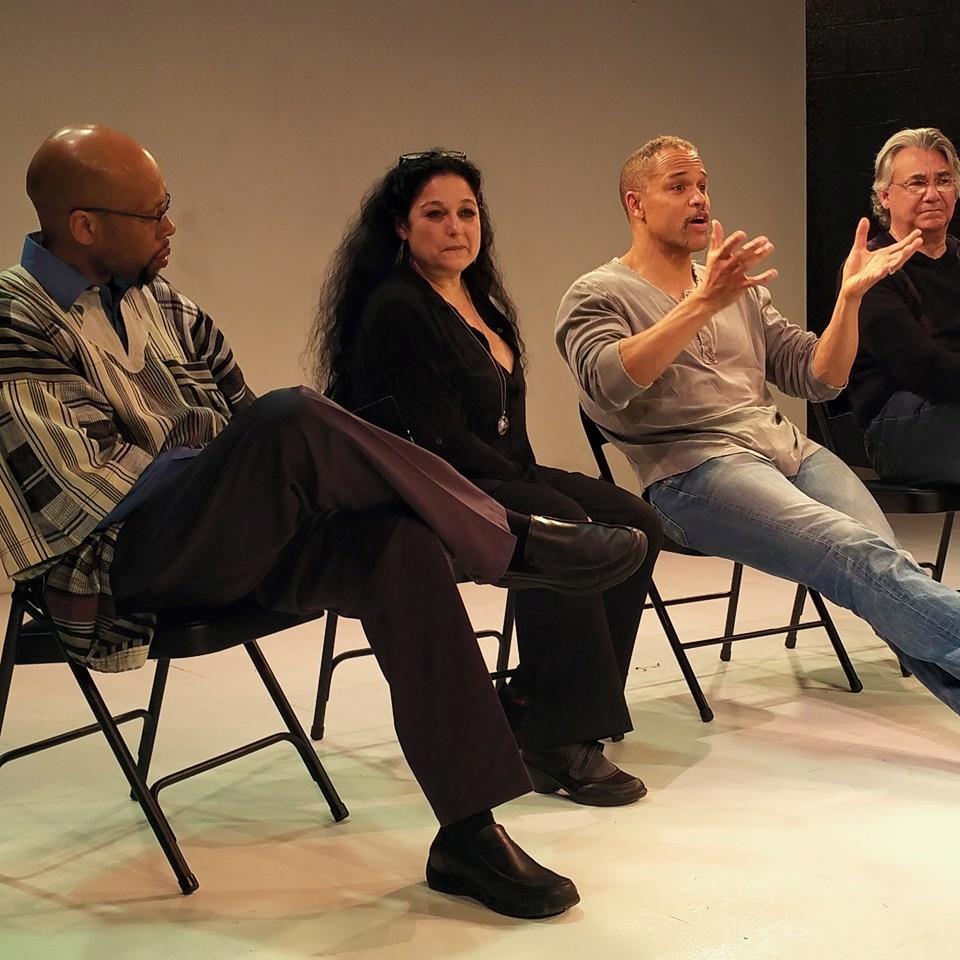
Post-show with, from lft, Dr. Akil Khalfani, Phoenix Artistic director, Elise Stone, and director Paul Kwame Johnson
This was the second post-show discussion performance. This evening was moderated by Dr. Akil Khalfani, director of the Africana Institute, and professor of sociology at Essex County College. His discussion as compared to Reverend Lewis’ at the beginning of the week, took on a more scholarly bent, as one would expect. As a professor of sociology, he was interested mostly in the idea of “blackness” as a stigma, and by what process we can begin to de-stigmatize the term, and the people the term attempts to define. I think, however, that we return to Reverend Lewis when we understand that, to de-stigmatize a people requires that shift in spiritual awareness that allows us to up-level as a human species. I’m not sure this is possible, but I don’t suppose I would have written the play if I didn’t hold out hope.
It was an extraordinary week. I grew. The play grew. We all left eager to see what the next performance week would bring.
Second Week
Tuesday, 5/5
Rough, rough, rough… A week off will do that, particularly without any sort of a brush-up rehearsal. Again, I think the impact of the play itself tends to mask for the audience any difficulties I may be having personally on-stage. Still, it’s important that I stay honest about it. Not much else to report about this evening. First days back can tend to look like this. I guess there are times when one can be grateful for a small house…
Wednesday, 5/6 
This evening’s house was full. There was a high school group from Brooklyn, and the moderator of the evening’s post-show discussion was the professor and author, Daniel Black, who also brought a contingent of students from CCNY.
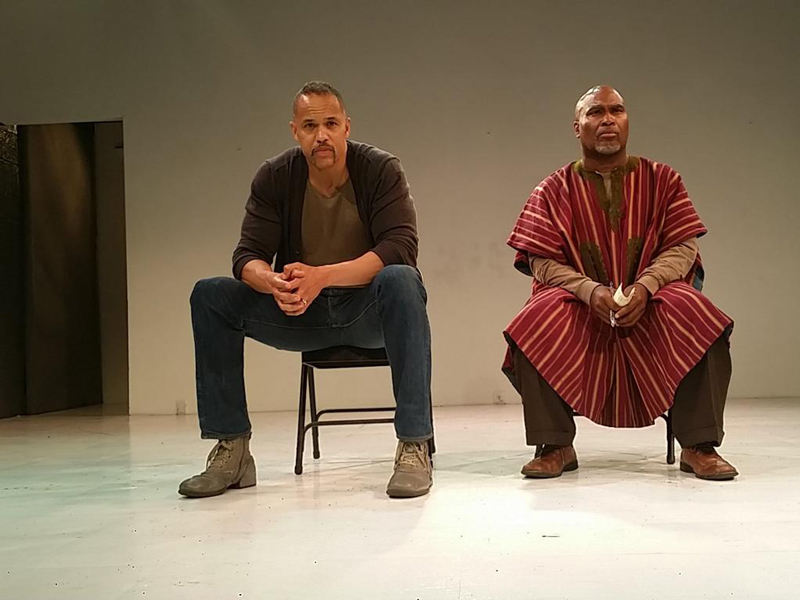
Dr. Daniel Omotosho Black, author of Perfect Peace.
The high school kids left after the curtain call, so I was never able to get any feedback from them, or any sense of how they had experienced the play, which is a drag, as I was looking forward to it… However Daniel’s group stayed, and this coterie of college-aged black men had no shortage of positive input, creating a truly valuable discourse.
Dr. Black has written extensively in the first four of his seven novels of life and circumstance in the pre-civil rights South. I tend to think that there is very little difference between what creates our current racial divides, and what created them before 1960, and that what gave rise to all of it is as old as the slave trade itself. I was sure that Dr. Black would see the same issues at work in my play as those he explores in his books, and I thought therefore that he would be a strong choice to facilitate one of these discussions. He did not disappoint.
Thursday, 5/7
A midweek slump in attendance. There it is again… It’s just hard to get people downtown to these little NY theatres, no matter what’s going on, unless you’re boasting some sort of celebrity name, or something like that. They come on the weekends, however, as the numbers for the rest of the run attested. As for the performance… I think it was just fine. A little bit more honest, a little bit more natural every day…
Friday, 5/8
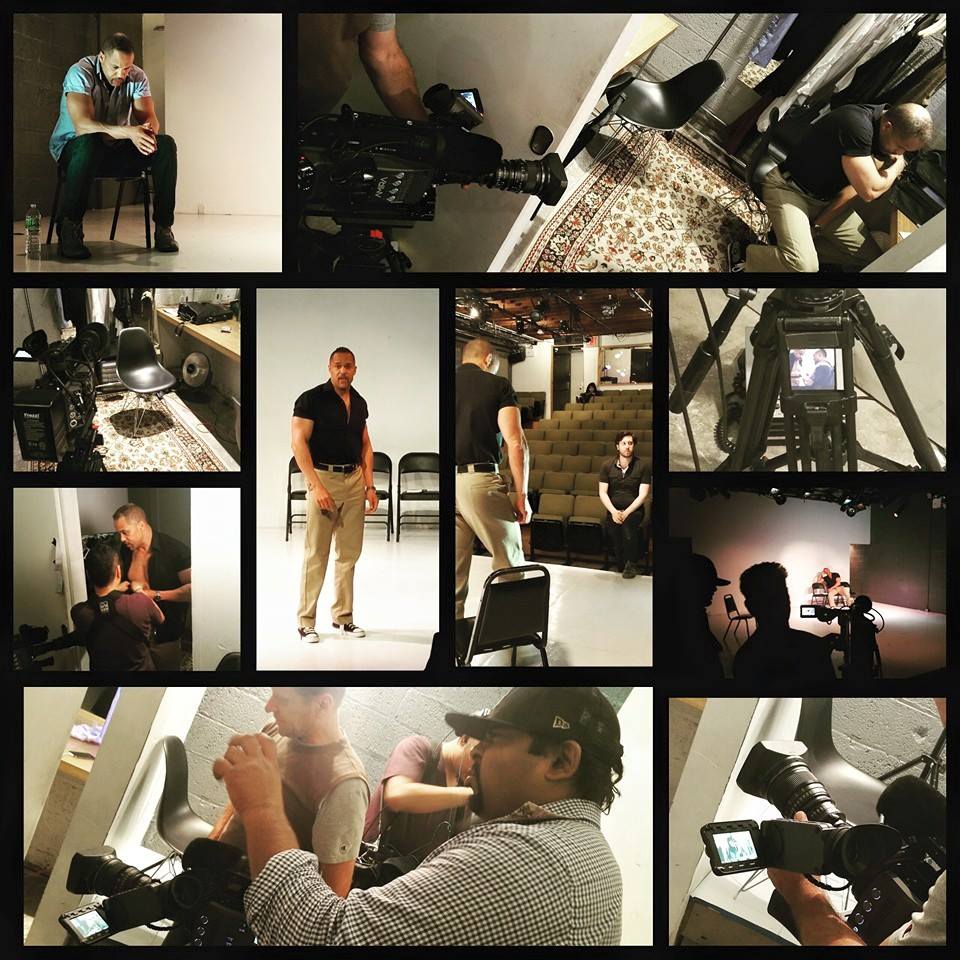 This was the day that Bobby Razak and crew came to record footage of the production, the performance, the theatre, and the New York environment for the film that he is making about the making of this play. We started early. We needed a full day to capture all the essence and energy of the NYC debut of “American Moor.” Interviews with the theatre’s artistic directors were conducted. There was clearly a different energy all around then when we were doing the same at Luna Stage in NJ earlier in the year. New York is different than everything… Any documentary made with this play as the focus would not have been complete without coverage of this element of its evolution.
This was the day that Bobby Razak and crew came to record footage of the production, the performance, the theatre, and the New York environment for the film that he is making about the making of this play. We started early. We needed a full day to capture all the essence and energy of the NYC debut of “American Moor.” Interviews with the theatre’s artistic directors were conducted. There was clearly a different energy all around then when we were doing the same at Luna Stage in NJ earlier in the year. New York is different than everything… Any documentary made with this play as the focus would not have been complete without coverage of this element of its evolution.
It was a nearly full house this evening as well, with an impromptu post-show discussion.
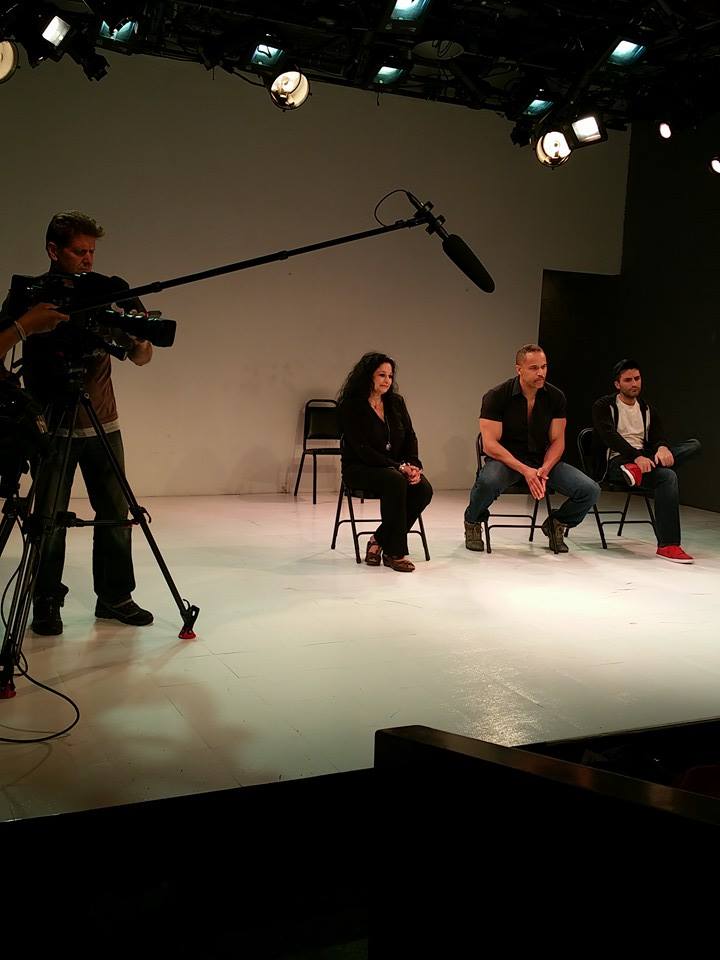
Dan Lehrecke at the camera, and Elise Stone, and Josh Tyson
By this point, the show is running smoothly… I, as per usual, tend to panic slightly in the last third of the piece as I’m trying to bring it home, but also as per usual no one seems too much notice my struggles. And again, I can only assume this is more testament to the power of the play itself, and not so much to me.
Saturday, 5/9
The last of the scheduled post-show discussion days, moderated by Kevin E. Taylor, a Newark author, minister, impresario. He too brought a following to the theatre this night, but the audience, in general, was quite diverse, and eager to speak back at the end of the evening.
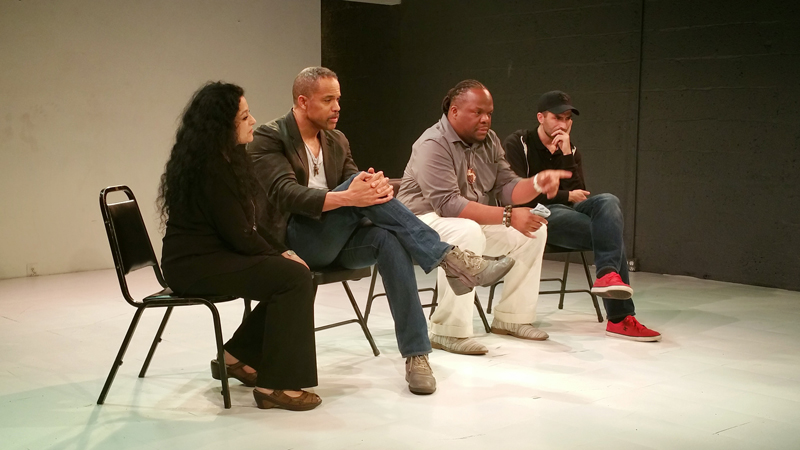
Elise Stone, Kevin E. Taylor, and Josh Tyson
These post-show discussions are always a bit frustrating, especially with a play like “American Moor” that demands that so many questions be asked and answered in order to do what the play begs, which is to reach an understanding via communication. There is never enough time in the post-performance setting to pursue any line of dialogue to satisfactory conclusion. Regardless, the things that most needed to get said did get said. Points of connection and the expression of new awareness by people across the ethnic and gender spectrum (yes, there is now a gender spectrum) suggested that all we are doing is right.
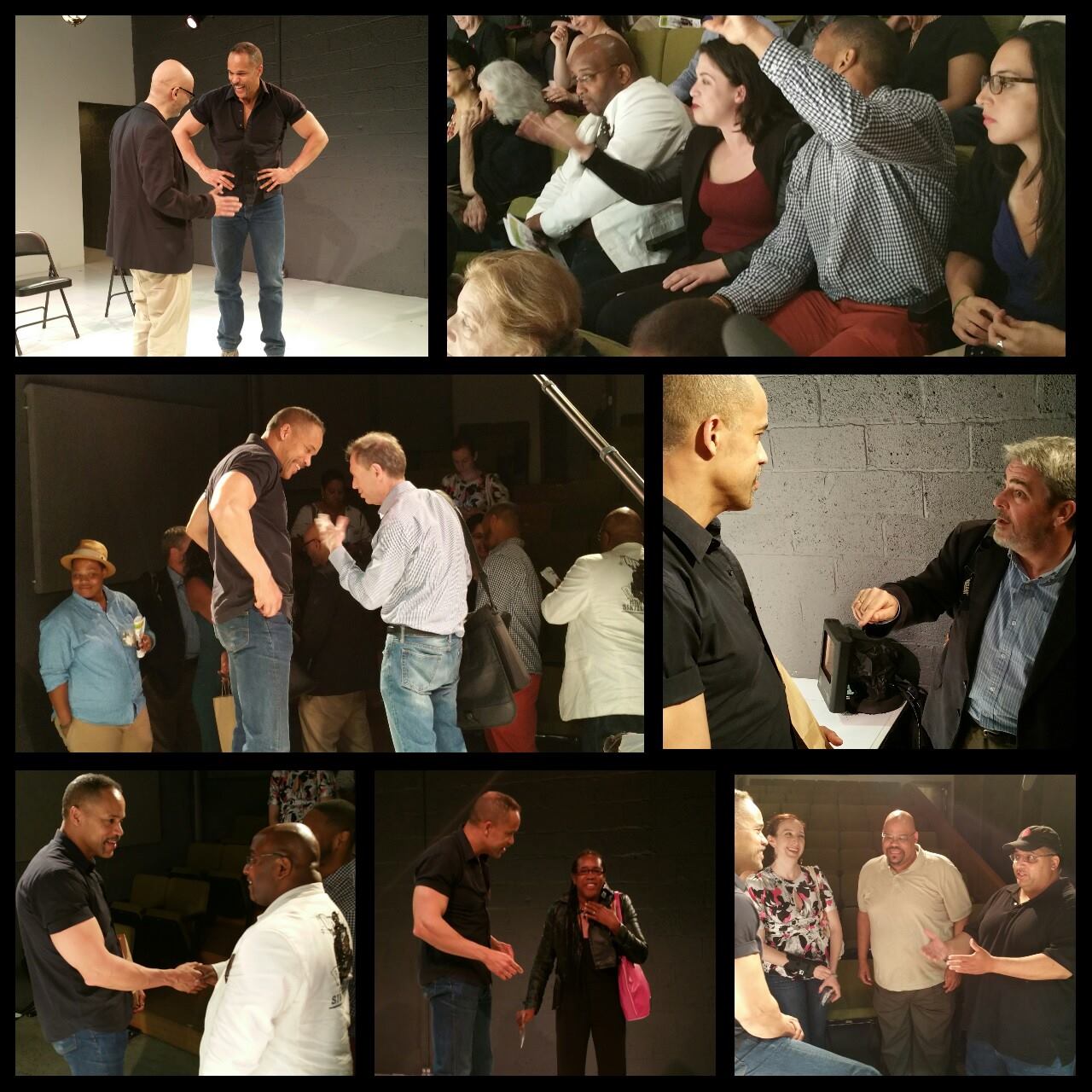
Sunday, 5/10
Mother’s Day was our final performance at The Wild Project. It was a sold out matinee. I was exhausted from doing the show the evening before and getting very little sleep, then jumping into an early performance on the following day.
After each performance over the two weeks, even those with post-show dialogue, many would remain in the theatre and in the theatre lobby to greet me and give their further comments. This made evenings long, and the afternoon of the matinee was no exception. However, I can only regard it, this energy towards further engagement, as validation of the strength and impact of this work.
We made it to the end of this piece of the odyssey. My energy and attention is already turned towards Anacostia, Washington DC, and what four weeks of performances at The Anacostia Playhouse will be like. I need to rest up, but I am eager for the challenge and up for all the awakening that it promises.
DC is an exciting prospect for our next stop. It is a smaller, more tightly-knit theatre and academic community, with an unheard, unseen population all it’s own, and a theatre right in the middle of an underserved neighborhood on its way back. There will be a great deal to do and explore there. The greater DC area may or may not be happy we came, but we certainly will not go unnoticed.
